To be continued. Start see No. 5/2007
Traveling with a Line, Quadrug and Sharubik around the country Graphics
The development technology of the basics of graphic literacy in children 6-7 years old
The correct answer and an example of reasoning: Yes, Snow White is right. To the left of the triangle is a square, it has four corners, which means it is a quadrangle. To the right of the cube is a rectangle; it also has four corners, which means it is also a quadrangle.
Evaluation of the results-1: Denial of a statement or lack of response - 1 point. Confirmation of the truth of the statement without proof, explanation - 2 points. The proof of the truth of the statement is 3 points.
Score 2: No response, image not decoded - 1 point. The proof of the truth of the statement without reliance on the graphic image - 2 points. The proof of the truth of the statement based on the graphic image is 3 points.
Task 3
Task 1 To identify the features of children's skills to highlight the essential features of the figures, summarize their shape, exclude the absence of signs; prove or disprove the truth of the statement.
Task 2 To identify features of the ability to decode graphic information, correlate the name of the figure with its image, use the graphic image to prove the truth of the statement.
Instruction: “Dwarves from houses number 2, 3 and 7 think that their houses are in the shape of a polygon. (Repeat: “Figures 2, 3, and 7 are polygons.”) Do you agree with the gnomes? Why?"
The correct answer and an example of reasoning: No, the dwarves are wrong. Figure number 2 - a triangle - has three angles, it is a polygon. Figure 7 has six angles; it is also a polygon. And the figure No. 3 - the oval - does not have a single angle, it is not a polygon. Therefore, not all figures are polygons.
Evaluation of the results-1: The statement of the truth of the utterance or lack of response - 1 point. Denial of the truth of the statement without proof, explanation - 2 points. The proof of the denial of the truth of the statement is 3 points.
Score 2: No response, image not decoded - 1 point. The proof without reliance on the graphic image is 2 points. The proof is based on a graphic image - 3 points.
Task 4
Task 1 To reveal the features of the skills to generalize the form according to essential features, regardless of the spatial arrangement of the figures, to exclude by the absence of an independently selected sign, to prove your choice.
Task 2 To identify features of the ability to read images of two-dimensional and three-dimensional objects, use a graphic image to prove the choice of an object.
Instruction:“One of the gnomes told Snow White:“ My house is in shape not like other houses. ”
What house could this dwarf live in?(Repeat: “Which figure is not like the others?”) Tell me how this dwarf could reason. ”
Three possible answers are possible depending on the feature highlighted in the figures. Figure No. 3 - an oval - has no angles and sides, is represented by a curved line. The rest of the figures have angles and sides, are depicted in straight lines. Figure
No. 7 - the hexagon is not convex, the remaining figures are convex. Figure number 4 - cube - volumetric, the remaining figures are flat.
Evaluation of the results-1: No answer - 1 point. One figure with an explanation or two figures without explanation is highlighted - 2 points. 2-3 figures with an explanation of 3 points are highlighted.
Score 2: The image is not decoded, the lack of response is 1 point. The proof of the choice of a figure without reliance on the graphic image is 2 points. The proof of the choice of a figure based on a graphic image is 3 points.
Task 5
Task 1 Reveal the features of the skills to navigate on the sheet plane, establish mutually inverse spatial relationships between objects, change the reference point, transmit the shape of the figures and their spatial location in the image.
Task 2 To identify features of the ability to encode graphic information; create an image in accordance with the specified conditions; accurately convey the shape of figures using lines - straight lines, curves; use drawing and graphic tools.
Content: The child is invited to a sheet of paper, pencils, pen, ruler, stencils with figures. It is required to draw the figures, subject to certain conditions: draw a circle, square, rectangle, oval, triangle and pentagon so that: the circle is between the triangle and the rectangle, the rectangle is to the right of the circle, the triangle is above the oval, but below the square, the pentagon is to the right of oval and under the circle.
Instruction:“Snow White has a birthday today. The dwarves baked cookies for her in the form of geometric shapes for her and want to beautifully arrange it on a platter. Help the dwarves lay out the cookies. Draw a circle, square, rectangle, oval, triangle and pentagon so that: the circle is between the triangle and the rectangle, the rectangle is to the right of the circle, the triangle is above the oval, but below the square, the pentagon is to the right of the oval and under the circle. You can use all the objects lying on the table. "
The instruction may be repeated no more than three times.
See below for a sample answer.
Such an image is built using templates.
Evaluation of the results-1: Correctly transmitted the shape and location of up to 2 figures or lack of response - 1 point. Correctly conveyed the shape and location of 3-4 figures - 2 points. The form and arrangement of 5–6 figures is correctly transferred - 3 points.
Score 2: The information is not encoded, the lack of response is 1 point. Information encoded with errors, without the use of graphical tools - 2 points.
Information is encoded correctly, using drawing and graphic tools - 3 points.
 Note:
All figures are on the proposed templates, but they need to be selected among other figures. The assessment takes into account the transfer of spatial relationships between the figures. The figures themselves can be rotated.
Note:
All figures are on the proposed templates, but they need to be selected among other figures. The assessment takes into account the transfer of spatial relationships between the figures. The figures themselves can be rotated.
Task 6
Task 1 Reveal the features of the ability to mentally transform the shape according to a given condition: divide the square into four equal parts, determine and name their shape.
Task 2 To identify the features of the ability to transform graphic images according to a given condition: divide the figure into parts by straight lines; use graphic tools.
Instruction:“The Dwarves have prepared a square cake for the holiday. Lovers of cakes consider themselves 3 gnomes and Snow White. How many parts do you need to split the cake? And if you divide the square into 4 equal parts, then what shape can they be? Depict how to do it in straight lines on these squares. ”
The correct answer is: The shape of the resulting parts can be square, rectangular and triangular in two versions. There are 4 main options for dividing a square into 4 equal parts by straight lines (other options are obtained from the main ones by turning the line or the whole square).
Note: More images of the contours of the square are suggested than possible division options to exclude a hint in the number of options.
Evaluation of the results-1: The absence of an answer or the indication of one variant of the form of parts - 1 point. Indication of two form options - 2 points. Indication of 3-4 variants of the form - 3 points.
Score 2: No answer or one option for graphic division, the lines are uneven, without the use of graphic tools - 1 point. Performing two methods of graphic division, the lines are even, the parts are proportionate, without the use of graphic tools - 2 points. Performing 3-4 methods of graphic division, straight lines, proportional parts, the use of graphic tools in the construction - 3 points.
Task 7
Task 1 To identify features of the ability to make mental spatial transformations of an object (rotational symmetry) based on an analysis of the graphic structure of the object and highlighting patterns; prove your choice.
Task 2 To identify features of the ability to read a graphic image, choose appropriate conditions; Build a graphic image based on the sample.
Content: The child is offered a sheet with the image of three squares, divided into 4 sectors and in a certain way painted, arranged in a certain sequence; and a sheet with the image of 6 squares, divided into 4 sectors and painted. It is required to identify the regularity of the location of three given squares and from six squares to choose one that can continue the series. Then it is proposed to depict the selected figure.
Instruction:“Preparation for the holiday continues. Gnomes who don't like cake (how many are there?) Love gingerbread cookies very much. They have already selected three gingerbread cookies and put them in a box in a row. Help the dwarves choose another gingerbread and continue the row without breaking the sequence. Why did you choose this particular gingerbread? Now portray the missing gingerbread in the box. ”
The correct answer and an example of reasoning: You need to select gingerbread No. 3. All the gingerbread cookies in a row are arranged so that each next one turns to the right - down - left - up (or clockwise) by one shaded part. The missing gingerbread should have the upper left part shaded and the lower left part shaded.
Evaluation of the results-1: No answer, wrong choice without explanation - 1 point. The right choice without proof is 2 points. The right choice with proof is 3 points.
Score 2: Lack of image - 1 point. The image is distorted, not corresponding to the sample (selected object), - 2 points. The image corresponds to the selected sample - 3 points.
Task 8
Task 1
Task 2
Contents: The child is shown a square sheet of paper, bent in half and scissors cut a rectangle from its middle. Without unfolding the sheet, they suggest that the child name the shape of the resulting hole and depict what the sheet will look like if you expand it. Pencils, pens, a ruler, stencils are offered.
After evaluation, demonstrate the sheet by expanding it.
Instruction:“The holiday was a success. Everyone had fun, sang, danced. And only the gnome from the square house was preoccupied with something. Friends asked him why he did not have fun with everyone. It turned out that the dwarf wants to cut a window in his house, but does not know how to do it better. Gnome wants to fold his house in half(show folding sheet) and cut such a hole(show). What is the shape of the window in the house? Draw a house with a window. You can use any tools lying on the table. ”
The correct answer is: The result is a square window.
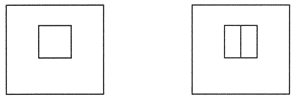
It is possible to build a hole in parts, building a rectangle to a square.
Evaluation of the results-1: No answer - 1 point. The generalized answer (quadrangle, rectangle) - 2 points. The correct answer is 3 points.
Score 2: Lack of image - 1 point. The image of a quadrangle, a rectangle, made by hand, asymmetrical, with uneven lines - 2 points. The image of the square, symmetrical, made using graphic tools, - 3 points.
Task 9
Task 1 To reveal the features of skills to mentally transform the shape of an object, to recreate it from parts based on the principle of mirror symmetry; act in two-dimensional and three-dimensional imaginary space; define and name the form.
Task 2 To reveal the features of skills to create a graphic image of an object by its part, to transfer the form of the named figure, to use graphic tools.
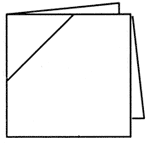 Content:
The child is shown a square sheet of paper. Fold it in half, then again in half (to make a square) and cut off the inner corner. Without unfolding the sheet, they suggest that the child name the shape of the resulting hole and depict how the sheet will look if it is expanded. Pencils, pens, a ruler, stencils are offered.
Content:
The child is shown a square sheet of paper. Fold it in half, then again in half (to make a square) and cut off the inner corner. Without unfolding the sheet, they suggest that the child name the shape of the resulting hole and depict how the sheet will look if it is expanded. Pencils, pens, a ruler, stencils are offered.
After evaluation, demonstrate the sheet by expanding it.
Instruction:“Snow White figured out how else to cut a window. She suggested folding the square in half, again in half(show bending) and cut off just one corner(show). What shape will the window in the house turn out to be? Draw a house with a window. You can use any tools lying on the table. ”
The correct answer is: It will turn out a rhombus or a square.
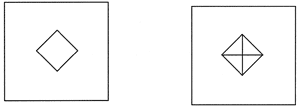
Evaluation of the results-1: No answer, incorrect answer (for example, a triangle) - 1 point. The generalized answer (quadrangle) is 2 points. The correct answer is 3 points.
Score 2: Lack of image - 1 point. The image corresponding to the named figure, built without the help of graphic tools, is 2 points. The image corresponding to the named figure, built using graphic tools, - 3 points.
Task 10
Task 1 To identify features of the ability to determine the shape of the object and its parts, find the figures in the image, name them, generalize; make figures from parts.
Task 2 To identify features of the ability to read a graphic image, isolate parts of the image, show them along the contour.

.Instruction:“One of the gnomes received a letter from his relatives. In the envelope was a photograph of the Quadrangles family, but, unfortunately, without a signature. The dwarf thought: who is depicted here and how many are there? Help the dwarf determine how many quadrangles are shown in the drawing. "
.The correct answer is:
In the drawing, 4 quadrangles: 1 square, 1 square of two triangles,
1 rectangle of two squares, 1 trapezoid or a quadrangle of a square and a triangle.
Evaluation of the results-1: Allocation and naming of 1 square - 1 point. The selection and naming of squares and a rectangle - 2 points. Allocation and naming of all quadrangles - 3 points.
Score 2:
Task 11
Task 1 To identify features of skills to distinguish figures of a given shape in the image, to characterize their spatial location and size; make figures from parts.
Task 2 To identify features of the ability to decode graphic information, isolate parts of the image, show them along the contour.

Instruction:“The gnome from the triangular house brought and showed everyone a photograph of his relatives. He said that 6 different Triangles are depicted here. Help Snow White find them and tell who is depicted where. ”
The correct answer is: 1 triangle is the largest, it is divided into 2 smaller triangles (left and right), 1 triangle at the top, it is divided into two small triangles (upper left and upper right).
Evaluation of the results-1: Isolation and display of 1-2 figures - 1 point. Isolation and display of 3-5 figures without characteristics of their spatial arrangement - 2 points. The selection and display of all figures with the characteristic of their spatial location - 3 points.
Score 2: Image is not decoded - 1 point. The image is not fully decoded, with errors - 2 points. The image is decoded correctly - 3 points.
Task 12
Task 1 To identify features of the ability to change the reference point when orienting on a real three-dimensional object, correlate the shape of the faces of the object and the shape of the image (projection); characterize the position of the object in space.
Task 2 To identify features of the ability to read a graphic image of a three-dimensional object; to perform hatching with straight lines - horizontal, vertical, inclined.
Content: The child is offered a parallelepiped model (all three dimensions are different) lying on the table, and a sheet with the image of this model on top, front and side (projection). It is proposed to determine which direction each projection corresponds to, and shade the images in a certain way: side view with horizontal lines, front view with vertical lines, top view with oblique lines.
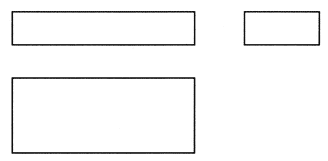
Instruction:“Snow White brought a parcel from the post office for the gnome from the cube-shaped house and laid it on the table(the parallelepiped model is put). What does a parcel box look like on top? Find this shape in the drawing and shade it with oblique lines to the right. The gnome is looking at the box in front. What does he see? Shade the desired shape with vertical lines.(to clarify - from top to bottom). And what can be seen from the side? Shade this shape with horizontal lines.(to explain - from left to right).
The correct answer is:
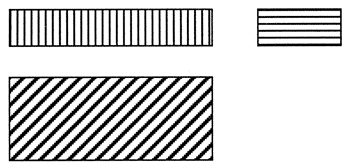
Note: Hatching is done by hand. The distance between the lines is not set.
Evaluation of the results-1: The absence of an answer or the correct choice of one projection is 1 point. The right choice of two projections - 2 points. The right choice of three projections - 3 points.
Score 2: Lack of response or hatching in one direction, the lines are uneven, the distances between them are not the same - 1 point. Hatching in two directions, the lines are fairly even - 2 points. Hatching in three directions, lines are straight, the distances between them are the same - 3 points.
Task 13
Task 1 To identify features of the ability to change the reference point when orienting on the image of a three-dimensional object, to establish a correspondence between the shape of the face of the object and the shape of the projection.
Task 2
To reveal the features of the ability to read graphic images of three-dimensional objects -
visual image and drawing in three forms, establish a correspondence between them, build a visual image of a three-dimensional object on the model.

Instruction:“Having printed the package, the dwarf found a letter and drawings in it. From the letter, he learned that his uncle Cube suggested that the dwarf build a tower on his house and sends a drawing of a house with a tower and images of two houses with towers. But the uncle did not write which of the houses is depicted in the drawing. Help the dwarf, choose the desired picture of the house and depict it. "
The correct answer is: This drawing corresponds to a visual image No. 1.
Evaluation of the results-1:
No answer or wrong choice - 1 point. Right choice without
explanations - 2 points. The right choice with an explanation is 3 points.
Score 2: Lack of image - 1 point. The image does not match the selected object, distorted in shape and size - 2 points. The image corresponds to the sample in shape, size, straight lines - 3 points.
Task 14
Task 1 To identify features of the skills to navigate in an imaginary two-dimensional and three-dimensional space, to establish spatial relationships between objects, to distinguish a figure from the background.
Task 2 To identify features of the ability to read a graphic image, convert a graphic image according to a given condition.
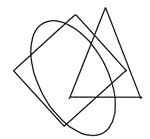
Instruction:“Several gnomes painted their houses on cardboard, painted and carved them, and then put them in a pile on the table. How many drawings are on the table? What shape is the figure? Color the shapes so that there is a red triangle on top, and the green oval is under the yellow square. ”
The correct answer is:
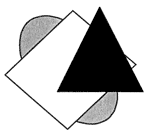
Note: The task involves the mental manipulation of flat objects in three-dimensional space. Objects are opaque (cut out of cardboard), so when painting their colors do not mix.
Evaluation of the results-1: Correctly transmitted the location of 1 figure (triangle) or lack of response - 1 point. Correctly transferred the location of 2 figures - 2 points. Correctly transferred the location of all the figures - 3 points.
Score 2: The image is not decoded, not converted - 1 point. Image converted with errors - 2 points. Image converted correctly - 3 points.
Task 15
Task 1 Reveal the features of the skills to navigate on a sheet of paper in a cage, to act in a given spatial direction, to establish patterns of alternation based on the principle of figurative symmetry.
Task 2 To identify features of the ability to build a graphic image in sequence, to complete the image on the model.
Content: The child is offered a sheet of paper in a cage. It is required to build an image following the instructions, and then continue on its own, highlighting the pattern according to its model. One cell to the right. One cell up. One cell to the right. One cell down. One cell to the right. Two cells up. One cell to the right. One cell down. One cell to the right. One cell up. One cell to the right. Two cells down. One cell to the right. One cell up.
Instruction: “Dwarves want to build a fence around their houses. But, before building, Snow White advised them to depict their plan. Help the Dwarves. "
The correct answer is:
Evaluation of the results-1: Errors in the spatial direction already at the 2nd – 3rd step - 1 point. Errors in the spatial direction at the 5–8th step - 2 points. Image without errors - 3 points.
Score 2: The image is incorrect already in the first part - 1 point. The first part of the border is depicted correctly, the continuation is distorted - 2 points. Image without distortion - 3 points.
Processing Diagnostic Results
The results of each type of task in points are summed up, then the average evaluation point is calculated, which determines the levels of development of spatial thinking and the levels of development of graphic skills of children.
Characterization of the levels of development of spatial thinking of children of preschool age
Low level - the child finds it difficult to determine, distinguish and name the main spatial directions, the location of objects relative to other objects in three-dimensional and two-dimensional real space; experiencing difficulties in determining and naming the shape of objects and their parts; Does not generalize objects by the presence / absence of spatial features, does not highlight patterns in the spatial arrangement of objects; does not reflect the sequence of their actions and their results in speech.
Middle level - the child defines and names the shape of objects and their parts, divides real objects and images into parts and recreates them with minor difficulties; summarizes objects by signs of shape, structure, spatial location; experiencing some difficulties when operating objects in an imaginary three-dimensional and two-dimensional space, in real it is not difficult; able to verbally express the result of his actions, but has difficulty in reflecting the ways to achieve the result, in proving judgments.
High level - the child defines and names spatial directions, relations between objects in both real and imaginary three-dimensional and two-dimensional space; Does not experience difficulties in defining and naming the shape of objects and their parts, in dismembering objects and reconstructing them from parts in real and mental terms, in generalizing objects in form and spatial arrangement; freely expresses in speech the results of activities and methods for their achievement, proves his judgments, uses geometric terminology.
Characterization of the development levels of graphic skills of children of preschool age
Low level– the child does not code or convert graphic information; experiencing significant difficulties in decoding graphic images, in determining the shape and spatial location of the depicted objects and their parts, in the analysis of the graphic composition of images; performs some graphical operations, but without the use of graphical tools.
Middle level– the child successfully decodes graphic information, analyzes the graphic composition of images; experiencing difficulties in encoding and converting graphic information; creates images according to the model; graphic tools are not used; constructed images are distorted in shape or spatial arrangement of objects; successfully operates with images of flat objects.
High level - the child successfully decodes, encodes and converts graphic information, creates an image according to the model, according to verbal instructions and as intended; correctly and clearly conveys the shape and spatial arrangement of two-dimensional and three-dimensional objects and their parts; performs graphic operations; applies graphic tools.
It is difficult to name at least one area of \u200b\u200bhuman activity, where the ability to navigate would not play a significant role.
This skill is a necessary condition for a person’s social being, a form of reflection of the world around him, a condition for successful cognition and an active transformation of reality.
Free manipulation of spatial images is that fundamental skill that combines different types of educational and work activities.
In order for a child to successfully attend school, he must be free to navigate in space, master basic spatial concepts. If these concepts are not sufficiently or inaccurately formed in the child, this directly affects the level of his intellectual development: when constructing, it can be difficult for the child to make up the whole of the parts, to reproduce the given form, and his graphic activity is disturbed. In addition, the child often has difficulty mastering reading, counting and writing. All functions providing visual-spatial distinction between objects (field and visual acuity, eye), are intensively formed precisely in 5-7 years. Therefore, it is advisable to carry out corrective work on the development of optical-spatial orientation in the preschool period.
The formation of optical-spatial orientation is inextricably linked with the development of thinking and speech. With the appearance in the active dictionary of a preschooler of the words: left, right, forward, back, close, far, the perception of space rises to a new, qualitatively higher level - spatial concepts expand and deepen.
The drawbacks in the development of spatial orientation are, as a rule, secondary in nature, and, therefore, can be adjusted using specially organized training. The sooner the features of spatial representations in children are identified, the earlier the work will be organized and the more favorable the forecast for their further education will be.
Teacher-researcher O.I. Galkina notes that the formation of optical-spatial orientation requires the creation of the followingconditions :
accumulation by children of diverse sensory experience based on the inclusion of various analyzers in the observations and active practical activities of children;
acquisition of verbal knowledge, providing distraction, generalization and synthesis of spatial signs and relationships in unity with practice;
the ability to use spatial concepts in solving mental problems in the process of various types of independent work.
The work on the formation of optical-spatial orientation consists of the followingstages:
1. Orienteering training in the scheme of your own body.
I stage:
Orienteering training in the scheme of your own body.
Tasks:
Improve children's ability to navigate "on themselves", to indicate in speech the spatial arrangement of parts of their bodies.
To develop the ability to determine the sides of the person standing in front and opposite, to correlate with the sides of your body; with their verbal designation, actively use the appropriate spatial terms (“right” - “left”, etc.).
To consolidate the idea of \u200b\u200bchildren about the relativity of spatial relations (in a situation of changing the position of the child himself, changing the reference point for the orientation position in the surrounding space).
At this stage, the work is carried out comprehensively by all DOW specialists: speech therapist, educator, physical development instructor, music director, psychologist. The knowledge gained is fixed not only in the classes of these specialists, but in walks, in regime moments, and games.
Initial in the development of spatial orientations is children's awareness of their own body patterns. When working, it is taken into account that orientation in the horizontal directions (back — front, forward — back) suffers more than in vertical ones (above — below, above — below, above — under). Often, children find it difficult to master concepts.left - right, left - right. A.N.Kornev connects this with the fact that among all the speech designations of the directions of space, abstract conceptsleft and right have the least sensory reinforcement.
The work on the formation of optical-spatial orientation begins with the differentiation of conceptsup - down, front - back.
At the initial stage, the following didactic games and exercises are held:
"Above - below", “Where is the bear?”, “What is ahead, what is behind”, “Who is ahead, who is behind?”, “Where is the toy?” "Teams."
In the formation of the ability to distinguish between the right and left sides “on oneself”, real sensory sensations of children are used. For example, the left side of the body is correlated with the location of the heart. The teacher offers the child to put his left hand to his chest, find the heart and listen to how it beats. Also, the child is provided with support with external space through a system of labels: applique images, bright ribbons, bows, etc. For example, the teacher invites the child to find and show where his heart is. When the child finds it, an application image is attached to the left side or a red ribbon is tied to the left wrist. Children quickly remember that on the left is “where there is a red ribbon”, that from a red ribbon one should start examining a series of pictures with sequential actions, start listing or counting objects, etc. Gradually, with the assimilation of the speech designations of the right and left hands, the external support is removed.
To form the differentiation of right and left body parts are offered the following tasks:
Show the right hand and name it. Show and name the left hand.
Show or take an object with your right (left) hand.
Correlate parts of the body with the right hand, calling them (right hand, right leg, right eye, right ear); correlate body parts with the left hand and name them (left hand, left leg, left eye, left ear);
Show the left leg with the right hand, the right ear with the left hand.
As soon as children begin to confidently navigate in the scheme of their own body, exercises are conducted to determine directions in space. At this stage, it is recommended to use the following games and tasks:
Extend the right hand to the side, list the objects located on the right. Extend the left hand to the side, list the objects located on the left.
Turn your head to the right, then to the left.
Tilt your head to the right shoulder, i.e. to the right, tilt your head to the left shoulder, i.e. to the left.
Turn right, take a few steps in this direction. Turn right, take a few steps.
The game "Where will you go, what will you find?"
After the children master the orientation on themselves, they proceed to training in determining the location of objects in relation to themselves (above, below, in front, in front, behind, behind, left, right ) First, the children are asked to determine the location of only two objects located in opposite directions from them: in front - behind, to the right - to the left. Later, the number of items increases to four. First, objects are placed at a small distance from the child, gradually the distance increases.
The following tasks are proposed to clarify and assimilate spatial relationships:
Standing in a column, name a comrade standing in front, standing behind. Standing in a row, name the comrade standing on the right and the comrade standing on the left.
Identify the right and left, upper and lower edges of the picture hanging on the wall.
According to the teacher’s instructions, place the appropriate objects on the table to the right and left of yourself.
Determine the location of the subject in relation to itself, correlating with the corresponding hand (“Window to my left”).
Identify the right and left handprint
Put the pen to the right of the notebook; put a pencil to the left of the book; say where the pen is in relation to the book and the pencil in relation to the notebook - left or right. The spatial location of three objects is also determined: put the book in front of you, place a pencil to the left of it, and a pen to the right.
Great difficulties in children are caused by determining the right and left parts of the body of a person sitting or standing opposite, because in this case the child needs to mentally imagine himself in a different spatial respect. The following exercises are recommended for a better understanding of these relationships:
Acquaintance with the scheme of the body standing opposite. An evoked child, standing with his back to a group of children, raises his right hand. The others also raise their right hand. Then the child, without lowering his raised hand, turns to face the children. Those, comparing the position of his raised hand with his own, draw a conclusion about the opposite arrangement of the right and left parts of the body in people standing against each other.
Determine the right hand (left foot, right eye ...) at home, and then at the comrade standing opposite.
Identify the right and left sleeve of the jacket, lying down with the back.
Identify the left and right pockets of the jacket.
5. Graphic image direction. Show with your hand the direction from top to bottom, place the card with the arrow in the appropriate direction.
Similarly, they ask to show directions from bottom to top, from right to left, from left to right.
For example:
II stage:
Orienteering training in the environment.
On next stage pass to the assimilation of spatial patterns.Tasks:
To develop the ability to draw up diagrams of the path of movement in and around the kindergarten.
To learn to move in space, guided by the scheme and plan (route) of the path, indicating in speech the direction of your movement.
To teach self-planning of various rooms, a group site, the ability to correlate them with real space and mark the location of objects on the plan.
To consolidate the ability to indicate in speech the location of objects in real space.
Training in spatial orientation using schemes and plans is carried out in the following areas:
Teaching children orientation in space according to the picture-plan.
Acquaintance with conditional (schematic) images of toys, real objects and the surrounding space.
Orientation Training:
according to space schemes;
according to the plans of space;
according to schemes and plans of movement (routes).
Teaching children to independently draw up the simplest schemes and plans.
In parallel with the work on the differentiation of the right and left parts of the body and the development of orientation in the surrounding space, the understanding and use are refinedprepositional cases denoting spatial relationships between objects. In order to strengthen the indicative basis of activity, the meanings of prepositions and adverbs are worked out in relation to the situation.
In the work on the prepositional cases two stages:
I . Observations on the semantic meaning of prepositions, clarification of children's ideas about the preposition as a separate word.
II . Familiarization with the syntactic role of prepositions.
In order for prepositions to be fixed not only in the auditory, but also in the visual memory of children,I stage spatial prepositions are divided into the following groups according to the similarity of lexical meaning:
1st group: in, out;
2nd group: na, s (co);
3rd group: above, under, between;
4th group: from, for, due;
5th group: from, under, from under;
6th group: from, to, to;
7th group: before, behind, around, about, near;
8th group: through, through, through.
In each group, prepositions are united by similarity or opposite of lexical meaning. This allows you to assimilate the prepositional cases, carrying out speech-interpretative operations in comparison, comparison, analysis, synthesis, generalization.
III stage:
Learning to perceive the spatial relationships between objects.
The analysis of spatial relations, according to the teachings of I.M.Sechenov, takes place in an elementary form due to the activity of visual and motor analyzers. Therefore, in the understanding by preschoolers of spatial relations, when specifying and differentiating prepositions, the use of visualreceptions . Such as:
training in which the connections and relationships between actions performed by the child are presented;
clarification of the relationship between the objects in the pictures;
building sentences according to the model using graphic schemes of prepositions;
the assimilation of expressions with prepositions on samples of live speech and literature read in the classroom.
Tasks:
To improve the ability to understand and verbally denote the spatial relationships between natural objects and their images, expressed by simple prepositions(“In”, “on”, “y”, “s”, “for”, under, “over”, “before”).
To improve the ability to understand and use simple and complex prepositions(“Because of”, “from under”, “between”, “through”, “about”, “near”)
IV stage:
Flat orientation training.
At this stage, the followinggood luck:
To form the ability to determine the upper right, lower right, upper left, lower left corners on the plane.
Develop the ability to place objects on a plane according to verbal instructions.
To develop the ability to keep in memory the spatial arrangement of objects on a plane.
To learn to arrange objects in the mentioned directions of micro-space (from top to bottom and from bottom to top, from right to left and from left to right, in the upper right corner and in the lower left corner, in the middle (center), etc.).
Enrich expressive speech with adjectives“Left”, “right”, “higher”, “lower”.
From the first lessons, children are offered to find the upper and lower strips of the card, to lay out a certain number of objects at the top or bottom or left and right. Used tasks to recreate the location of geometric shapes, the definition and designation of their spatial location. A table with an image of three to five geometric shapes is proposed. Children examine it, call the figure located in the center (in the middle), and then the figures above and below or to the left and to the right of it. Then the children reproduce the pattern in the appropriate order. To fix the ability to navigate on the plane, to determine the relative position of the pictures on the left, right or in the middle, at the top and bottom, games like “Paired Pictures” help. First, the child must describe how the toys are located on the card, and then find paired pictures.
Focusing on the individual characteristics of preschoolers, they use the following teaching methods:
tracing the image contour with the index finger of the right hand (visual and motor-tactile formation of the image of the object);
drawing an outline of an object from sticks or matches;
"Drawing" with a cord;
drawing straight lines of large scale on asphalt or snow with a small stick or stick;
straight lines of geometric shapes: square, rectangle, triangle;
transferring the shape of the object using the finished outline of the "stencil" with subsequent shading;
finding an identical form among others;
“Drawing” an object with a finger in the air, on a table, on its own palm, on the back of a comrade;
drawing symmetrical contour images (for example, the left half of the picture is a sample, and the right, indicated by a dotted line, is drawn by a preschooler);
the connection of two objects by a straight line - the "path", in the future the image of objects by points.
In parallel, the child’s hand is trained in the free passage of closed circular lines. For this, exercises such as “stir the porridge in a plate, soup in a pan,“ portray snow whirls ”, etc. are used.
Next, we move on to more complex options for graphic work - tasks with the inclusion of geometric shapes and colors. These exercises are performed on a piece of paper. Begin using a visual pattern, then leave only verbal instruction.
The development of spatial orientation in the performance of graphic tasks takes place in unity with the formation of spatial relationships. The basis of this work consists of tasks on the differentiation of the right - left parts of the body, the difference in directions: forward - backward, upward - downward, right - left.
Spatial concepts are better fixed in the process of specific, practical work carried out in a certain sequence: placing objects on a table on a sheet of paper according to speech instructions.
The formation of an optical-spatial orientation is extremely important for preparing a child with a general underdevelopment of speech for learning at school and its socialization among peers. The perception of space plays an important role in the orientation of the child in the surrounding world and contributes to its adaptation in various situations.
A PHP Error was encountered
Severity: notice
Message: Undefined offset: 0
Filename: main / content.php
Line: 79
Function: _error_handler
Line: 96
Function: view
Line: 316
Function: require_once
A PHP Error was encountered
Severity: notice
Filename: main / content.php
File: /var/www/solnechnyi/data/www/site/application/views/main/content.php
Line: 79
Function: _error_handler
File: /var/www/solnechnyi/data/www/site/application/controllers/Page.php
Line: 96
Function: view
File: /var/www/solnechnyi/data/www/site/index.php
Line: 316
Function: require_once
A PHP Error was encountered
Severity: notice
Message: Undefined offset: 0
Filename: main / content.php
File: /var/www/solnechnyi/data/www/site/application/views/main/content.php
Line: 93
Function: _error_handler
File: /var/www/solnechnyi/data/www/site/application/controllers/Page.php
Line: 96
Function: view
File: /var/www/solnechnyi/data/www/site/index.php
Line: 316
Function: require_once
A PHP Error was encountered
Severity: notice
Message: Trying to get property of non-object
Filename: main / content.php
File: /var/www/solnechnyi/data/www/site/application/views/main/content.php
Line: 93
Function: _error_handler
File: /var/www/solnechnyi/data/www/site/application/controllers/Page.php
Line: 96
Function: view
File: /var/www/solnechnyi/data/www/site/index.php
Line: 316
Function: require_once
MINISTRY OF EDUCATION AND SCIENCE OF THE RUSSIAN FEDERATION
FEDERAL EDUCATION AGENCY
BRYANSK STATE TECHNICAL
UNIVERSITY
Department "Computer Technologies and Systems"
Discipline "Languages \u200b\u200band programming systems"
COURSE WORK
Supervisor
ph.D., Assoc.
Student gr. 08-PRO
Bryansk 2010
Course assignment
Introduction
1. Design section
1.1 Justification of the need for development
1.2 Justification and description of the algorithm method
1.2.1 The mathematical part of the algorithm
1.2.2 Graphic part of the algorithm
2. Technological section
2.1 Choosing a language and programming environment
2.2 Block diagram of the program
2.3 Input and output data
2.4 Development and debugging of program text
2.5 Development of the user interface
2.6 Testing a program
3. User manual
3.1 Hardware and software requirements
3.2 Procedure for working with the program
Conclusion
List of references
Applications
Course assignment
On discipline "Languages \u200b\u200band programming systems"
Student Shora R.V. Group08-PRO
Subject:Development of a program for the Tetris game
Technical task.
The program should randomly display six different shapes onto the screen. The input data is the input of the options for moving the figures from top to bottom, moving the figures horizontally to the right and left, as well as turning the figures around their axis clockwise. Points must be added for each filled line, as well as to delete these filled lines.
The program should have a simple user interface. The color scheme is soft, not bearing mental and emotional stress.
Head Ph.D., Assoc. Roshchin S.M.
Introduction
This document describes a program written in accordance with the statement of the problem on the topic "Development of a program for the Tetris game" in the discipline "Languages \u200b\u200band programming systems". This program randomly displays various shapes on the screen. The input is the input of options for the speed of movement of figures from top to bottom and control of falling figures.
The purpose of the program is to entertain the players, improving their coordination and logical thinking. The program can be used as a game on different types of personal computers.
The story of the Tetris game begins in June 1985. Tetris was invented by Alexey Pazhitnov, and then was integrated on an IBM PC by Vadim Gerasimov. After that, the yoke of Tetris began to spread throughout Moscow, and then around the world. It was first delivered to Hungary, where Hungarian programmers integrated Tetris for Apple II and Commodore 64.
The game was seen in the world, and several representatives of large companies turned to the author of Tetris to buy distribution rights for the game. Alexey signs a contract with Mirrorsoft UK and Spectrum Holobyte, giving them rights to the computer version of Tetris. After the first copies of Tetris for home computers were betrayed, the game gained popularity among the population and became the best-selling computer game in England and the USA in 1988.
There are many ways to implement this program. They can be divided by functionality:
mathematical description of the movements of figures;
graphic display of movements of figures;
In the mathematical part, the basic principles and laws of the movements of figures are considered. This is the most important part of the program. The correct operability of the program depends on it. For its implementation, you can use various algorithms. For example, describe the movement of a figure by two linear functions. One will be responsible for the location of the figure horizontally, the other vertically. Changing the values \u200b\u200bof the variables of these functions for certain periods of time, the position of the figure on the plane will change. The third function will be responsible for cleaning completely filled contours. The main disadvantages of this method are the declaration of a large number of variables responsible for the description of already dropped figures, and the creation of a large number of additional functions responsible for rotating the figures around its axis.
Another way to mathematically describe the movement of figures and fill the tetris field is to create a two-dimensional matrix n * k. After a certain period of time, the values \u200b\u200bcorresponding to the position of the figures on the plane and already dropped figures will change. Those. the matrix value located on the n-th row and in the k-th column will correspond to the part of the figure located on the n-th horizontal and k-th vertical.
The above methods are not the only ones. They are only the most popular in the implementation of the Tetris program among programmers.
There are also a large number of different ways to graphically display shapes and a Tetris field. For example, to move on the plane ready-made drawings of Tetris figures. Then the figures will be stored in separate graphic files in the computer's memory. The complexity of this implementation method is to display already fallen figures and display a rotated figure around its axis. To do this, you will constantly have to create a new picture of the field from the pictures stored in the computer's memory.
Another way to graphically display shapes and tetris fields is to use off-the-shelf programming language elements. Most often tables are used for these purposes. By changing the color of the table cells at certain intervals, you can display on the screen the movement of the figures and the filled areas of the field. It is also possible to use elements such as buttons, areas for labels (Label). By changing their color, you can also display the movement of shapes and filled areas. But this method has a huge minus - the announcement of a large number of such elements.
It is also possible to use the built-in graphical capabilities of a programming language. When drawing tetris shapes, you can use a simple square image. To display it, you only need to know the coordinates of the upper left corner, as well as the value of the width of the square.
When developing a program for the game, Tetris used the object-oriented programming language Visual C #. The mathematical part of the program was created using a two-dimensional matrix. Graphical display was implemented using the graphical capabilities of Visual C #.
1. Design section
1.1 Justification of the need for development
In the “Introduction” section of this coursework, a brief history of the Tetris game was provided. As you can see this computer game is more than 25 years old. All the examples of this game that I studied are written in fairly old programming languages \u200b\u200b(for example, Basic, Pascal). In such games, there was a rather unfriendly user interface, weak graphic display (fairly sharp colors, minimal color palette) (Fig. 1).
Fig. 1. Tetris on Basic
Based on the above facts, it was decided to create a Tetris game program.
1.2 Justification and description of the algorithm method
When developing the Tetris game program, a two-dimensional array with a dimension of 24 * 15 was used to describe the mathematical part of the algorithm. To create the graphic part of the program, the graphic capabilities of the C # language were used.
1.2.1 The mathematical part of the algorithm
An array is an indexed collection of objects of the same type. In C #, arrays are somewhat different from arrays in C ++ and other languages, because they are objects, which gives them useful methods and properties. C # defines the syntax for declaring objects of type Array. However, an object of type System is actually created. Array Thus, C # provides the programmer with ideal conditions: behind a simple C-style syntax lies a class declaration that gives array instances access to the methods and properties of the System class. Array
In creating the algorithm, an array was used as a mathematical analogue of the Tetris field. Each cell in the array corresponds to a specific area of \u200b\u200bthe game field. Each area of \u200b\u200bthe game field can be filled with a figure or be empty. Accordingly, each area of \u200b\u200bthe field can take two values. For these purposes, you can use logical variables. Each figure has a specific shape and occupies several areas of the game field. Therefore, in the array, the cells corresponding to the filled areas of the field will have a logical value true. For cells corresponding to empty areas, a logical value will be assigned. false. Each horizontal of the tetris field corresponds to a row of a two-dimensional array, and the vertical to a column. The movement of the figures is carried out at regular intervals, i.e., the algorithm repeats at regular intervals. Equal time intervals can be achieved by calculating a resource-intensive algorithm (for example, calculating the Fibonacci series) or using a C # language element timer (which was used in this program). Each tick of the timer will repeat the figure movement algorithm. This is represented as a sequential change in the values \u200b\u200bin the cells of the array.
In order for the game to work, you need to assign values \u200b\u200bcorresponding to areas of the field to each timer cell in the array. Because the number of cells is large (there are 360), it was convenient to use cyclic designs. This allowed us to reduce the program code and the number of errors in it. For these purposes, the operator was used. for (Listing 1).
The short-term goal of the Tetris game is to fill out the horizontal shapes completely for subsequent cleaning and getting points. To do this, it was necessary to add the function of checking horizontal fullness into the program. For an array, this is represented as checking the cells of each row for the same values. This problem is solved by a conditional design. In this work, we used the operator if (Listing 1).
The mathematical part of the algorithm is based on the minimum number of elements: a two-dimensional array, a timer, a logical variable, a cyclic structure, and a conditional structure (Listing 1). The syntax for writing these elements in C # is simple, which makes the algorithm fairly simple.
1.2.2 Graphic part of the algorithm
GDH + - the interface of graphic devices. Applications with graphics, games, Computer Aided Design / Computer Aided Manufacture (CAD / CAM - design / production using a computer), drawing programs, for creating graphs and many other types of applications require developers to write code for working with graphics. Using user-created controls also involves working with graphics. Through its class library, Microsoft has made writing code for graphics easier than ever.
GDI + features:
Work with individual parts of drawings
Drawing image
Printout
Preview
Drawing2D Namespace
Imaging Namespace
The Graphics class encapsulates GDI + drawing surfaces. There are three main types of drawing surfaces:
Windows and controls on the screen
Pages sent to the printer
In-memory bitmaps
The Tetris game requires the image of the field areas in the form of squares. For this, the C # language structure was used. Rectangle (rectangle). To describe it, you need the coordinates of the upper left corner of the rectangle (which corresponds to the vertical and horizontal values \u200b\u200bof the game field), as well as its dimensions. Structure Regionallows you to combine different images into one.
To fill a specific area of \u200b\u200bthe picture with color, you can use Brush. The Brush class is an abstract class. To create an instance of the Brush class, classes derived from the Brush class are used, such as SolidBrush, TextureBrush, and LinearGradientBrush. The Brush class is in the System namespace. Drawing. The TextureBrush and LinearGradientBrush classes are located in the System namespace. Drawing. Drawing2D. Here is what each of these classes allows you to do:
SolidBrush fills the shape with solid color.
TextureBrush allows you to fill a shape with a drawing stored in binary representation. When creating such a brush, you also need to specify a framing rectangle and a framing mode. The framing rectangle determines which portion of the picture we should use when drawing - it is completely optional to use the entire picture. For the framing mode, there are several options, including Tile (tiles) - TileFiipx, TileFiipY and TileFiipXY, which allow you to consistently split the image into individual squares. Using TextureBrush you can create very interesting and very impressive effects.
LinearGradientBrush contains a brush that allows you to draw a smooth transition from one color to another, with the first color turning into the second at a certain angle. Angles are set in degrees. An angle of 0 means that the transition from one color to another is carried out from left to right. An angle of 90 ° means that the transition from one color to another is carried out from top to bottom.
The principle of constructing an image of a game field is simple. Using the cyclic and conditional constructions, the cells of the array are checked for the same logical values. Because each cell corresponds to a certain minimum area of \u200b\u200bthe game field, then knowing the value of the row and column of the array, it is possible to build a structure Rectangle. Combining Structures Rectangleone type, you can get two types Region Painting over these two Regionusing different types of “brushes” we get the image of the field (Listing 2).
Since the Tetris game is based on the use of the time factor, it is necessary to constantly graphically update the field of this game. To do this, each tick of the timer will occur the above principle of constructing an image of the game field.
When developing the program, it was supposed to use the Microsoft Visual C # 2008 Express Edition environment. This software development environment contains a set of patterns that are often used in software development. In the program, I used a number of templates:
ContextMenuStrip
This made it easier to write a program, as part of the code was generated automatically.
The above principles and elements have become the basis of the algorithm.
2. Technological section
2.1 Choosing a language and programming environment
To implement this course work, the programming language Visual C # was chosen. The language is based on a strict component architecture and implements advanced code security mechanisms. The C # programming language has combined the best features of a number of predecessors, namely language branches B - C - C ++.
The following mechanisms are inherited from the C ++ programming language by C #: "overloaded" operators, unsafe arithmetic operations with floating point, as well as a number of other syntax features.
Despite the very significant differences between the COM component object model (the main Microsoft standard for component design and implementation of software) and the Java Beans model, the Sun Microsystems basic standard for components (the language dependent implementation), the C # programming language has quite a lot in common with the Java language .
We list the most characteristic features of the similarity of the programming languages \u200b\u200bC # and Java. First of all, both languages \u200b\u200bbelong to the category of object-oriented and assume the uniqueness of inheritance. Other important features that bring together the programming languages \u200b\u200bC # and Java are the mechanisms of interfaces, exception handling, as well as processes or “threads”. Garbage collection and namespaces are implemented similarly in the two languages. Both programming languages \u200b\u200bare characterized by strong (strict) typing and dynamic code loading during program execution.
But despite the fact that a number of constructive syntactic mechanisms and implementation features are inherited from the C # programming language from the progenitors (C ++ and Java), the capabilities of this new programming language are not limited to the sum of the capabilities of its historical predecessors.
Among the fundamentally important decisions that are implemented by Microsoft in the programming language C #, include the following:
component-oriented approach to programming (which is also characteristic of Microsoft ideology as a whole);
properties as a means of data encapsulation (also characteristic in general for OOP);
event handling (there are extensions, including in terms of exception handling, in particular, the try statement);
unified typing system (corresponds to the ideology of Microsoft as a whole);
delegates (delegate - development of a function pointer in C and C ++);
indexers (indexer - index operators for accessing the elements of the container class);
overloaded operators (OOP development);
foreach operator (processing of all elements of collection classes, an analog of Visual Basic);
boxing and unboxing mechanisms for type conversion;
attributes (a tool for manipulating metadata in a COM model);
rectangular arrays (a set of elements with access by index number and the same number of columns and rows).
The above features of the C # language influenced the choice of a programming language and, accordingly, the environment for the program.
2.2 Block diagram of the program
When creating the Tetris software algorithm, a block diagram of the game was developed at the initial stage. It described the sequence of the game algorithm (Fig. 2).

When the Tetris application starts, a two-dimensional array is declared, followed by filling it with empty values. The game starts when the timer starts. Next, the figure is selected using the random number generator. In accordance with the selected figure, the first two lines of the array are filled. Then the figure enters the cycle of falling. The body of the cycle is a shift of the figure one line below and a check for pressing the "Right", "Left", "Rotate" buttons (when these buttons are pressed, the figure is shifted to the right, left, and rotate around its axis, respectively). The condition for ending the cycle is the lack of free space under the figure. After exiting the loop, the check for fully filled lines begins. If there are any, then they are cleaned and all the lines above are shifted. Next, a new shape selection and algorithm repetition takes place. If there are no filled lines, then a check is made for free space in the third line. If the third row is free, then the figure is selected and the loop algorithm is executed. When the third line is full, the timer stops and the game results are displayed. Then there is an exit from the game.
2.3 Input and output data
One of the most important functions of any programming language is to provide manual control of the program. This involves creating a user interface.
The output is the data reported to the user, and the input is the data that the user reports to the program.
The output data in the program is presented in the form of a graphic display of the game window (Fig. 3)
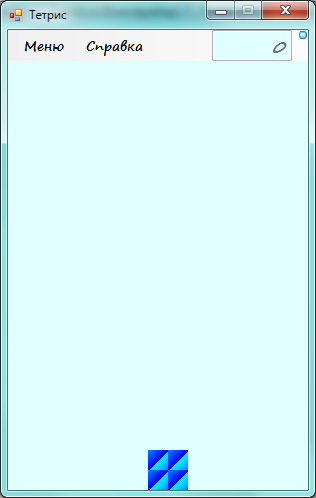
Game window.
The input data are presented in the form of program code that must be executed during certain user actions. Namely:
keystrokes Left, Right, Up, Space;
user work with the menu bar.
2.4 Development and debugging of program text
At the stage of development of the algorithm, it is necessary to determine the sequence of actions that must be performed to obtain a result. If the problem can be solved in several ways and, therefore, various options for the solution algorithm are possible, then the programmer, using some criterion, for example, the speed of solving the algorithm, selects the most suitable solution. The result of the algorithm development stage is a detailed verbal description of the algorithm or its block diagram.
After the requirements for the program are defined and the solution algorithm is compiled, the algorithm is written in the selected programming language. The result is the original program. Compiling a test program is probably the most difficult of the stages, requiring the greatest attention. To make this text clear to the user and the compiler, comments are used.
Debugging is the process of troubleshooting. Errors in the program are divided into two groups: syntactic (errors in the text) and algorithmic. Syntax errors are the most easily fixed. Algorithmic errors are more difficult to detect. The debugging phase can be considered complete if the program works correctly on one or two sets of input data.
2.5 Development of the user interface
Tetris is a game. Therefore, when developing a user interface, it is necessary to take into account a number of features:
The interface should be intuitive for a simple computer user.
The color scheme should not annoy the person.
Consider the first item.
The program is designed to enjoy your free time. It does not have to have a highly sophisticated management system. Therefore, the well-known program management system was used - the menu bar. Each menu item is assigned a name corresponding to the function. This makes the user experience easier.
As for the second point, “cold” colors (shades of blue) are applied here. They do not carry any mental load, so the pastime for a person will be pleasant.
2.6 Testing a program
Testing a program is the stage where it is checked how the program behaves on as many input data sets as possible, including those that are knowingly incorrect.
Basic principles of testing organization:
a necessary part of each test should be a description of the expected results of the program so that you can quickly find out the presence or absence of an error in it;
if possible, avoid testing the program by its author, as in addition to the objective difficulty of testing for programmers already indicated, there is also the factor that the detection of deficiencies in their activities contradicts human psychology (however, program debugging is most efficiently performed by the program author)
for the same reasons, the organization - the software developer should not “test” it alone (there should be organizations specializing in testing software);
a thorough study of the results of each test should be the rule so as not to miss a program error that is hardly noticeable at the surface;
it is necessary to carefully select the test not only for the correct (provided) input data, but also for incorrect (unintended);
when analyzing the results of each test, it is necessary to check whether the program does what it should not do;
used tests should be kept (to increase the effectiveness of repeated testing of the program after its modification or installation at the customer);
testing should not be planned on the assumption that no errors will be detected in the program (in particular, sufficient temporary and material resources should be allocated for testing);
the so-called “principle of error accumulation” should be taken into account: the probability of the presence of undetected errors in some part of the program is directly proportional to the number of errors already detected in this part;
you should always remember that testing is a creative process, and not treat it as a routine.
When testing the program, only a part of the above principles was fulfilled. Testing revealed a number of errors in the program algorithm, which were successfully fixed, and also changes were made to the user interface.
3. User manual
3.1 Hardware and software requirements
Hardware Requirements:
The required amount of RAM is 64 MB and a graphics adapter that supports the regime of 800x600 and higher, the color depth is 32 bits. The required hard disk space is 780 Kb. Keyboard, mouse.
Software Requirements:
Windows operating system: 2000 / XP (32/64) / Vista (32/64) / 7 (32/64)
3.2 Procedure for working with the program
Launch the Tetris app. exe (Fig. 4):
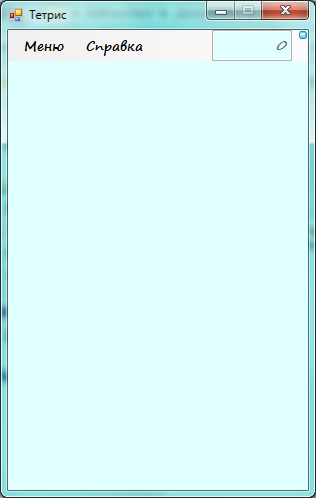
Tetris app. exe
In order to start the game you need to press Menu - New game. To change the complexity of the game, go to Menu - Difficulty. To temporarily stop the game, press the Menu - Pause or Space key. To continue the game, press Menu - Continue (Fig. 5).

Menu bar
Shapes are controlled using the Left, Right, Up keys (more Menu - Help - Control) (Fig. 6).
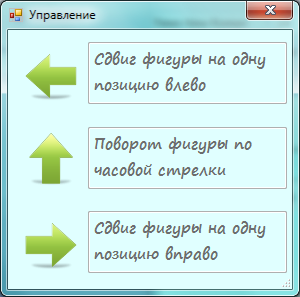
Management Window
To exit the program, press Menu - Exit). You can also see information about the software product and the developer (Menu - Help - About the program) (Fig. 7).
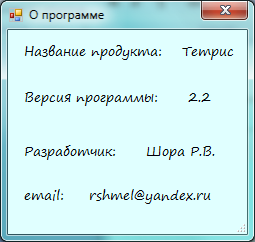
About window
Conclusion
In this course work, the task was completed - the creation of a program on the theme "Development of a program for the game" Tetris "". With this program you can have a good time, improve coordination and develop logical thinking. The program does not take up much space, is not demanding on the installed software.
List of references
G. Schildt C #: Training Course. - St. Petersburg: Peter, 2003 .-- 512s
Liberty, D. C Sharp Programming. - M .: Symbol-plus, 2005 .-- 684 p.
Watson C. Sea Sharp / K. Watson. - M .: Lori, 2005 .-- 862 p.
Zharkov V.A. Computer graphics, multimedia and games on Visual C # 2005. - M .: Zharkov press, 2005. - 812s.
excode / art6225p1.html
Applications
Listing 1
private void Form1_Load (object sender, EventArgs e)
for (i \u003d 0; i< 24; i++) // заполнение массива пустыми значениями
for (j \u003d 0; j< 15; j++)
Tet \u003d false;
textBox2. Text \u003d "0";
private void timer_Tick (object sender, EventArgs e)
if (SF \u003d\u003d false)
Random a \u003d new Random (); // figure selection
NumbeF \u003d a. Next (0.6);
P \u003d true; // the appearance of the figure in the first position
if (SF \u003d\u003d true)
if (NumbeF \u003d\u003d 0) // square
if (P \u003d\u003d true) // condition for the appearance of a square in the first position
Tet \u003d true;
Tet \u003d true;
Tet \u003d true;
Tet \u003d true;
P \u003d false // the figure does not appear in the first position
if (i< 23 && (Tet == false && Tet == false)) // условие сдвига фигуры
Tet \u003d false;
Tet \u003d false;
Tet \u003d true;
Tet \u003d true;
SF \u003d false; // figure does not exist
if (NumbeF \u003d\u003d 1) // boot
if (P \u003d\u003d true) // condition for the boot to appear in the first position
Tet \u003d true;
Tet \u003d true;
Tet \u003d true;
Tet \u003d true;
if (Razp \u003d\u003d 0) // figure boot to position 0
if (i< 23 && Tet == false && Tet == false && Tet == false) // проверка свободного места под фигурой
Tet \u003d false;
Tet \u003d false;
Tet \u003d false;
Tet \u003d true;
Tet \u003d true;
Tet \u003d true;
if (Razp \u003d\u003d 1) // figure boot in position 1
if (i< 22 && Tet == false && Tet == false) // проверка свободного места под фигурой
Tet \u003d false;
Tet \u003d false;
Tet \u003d true;
Tet \u003d true;
if (Razp \u003d\u003d 2) // figure boot in position 2
if (i< 22 && Tet == false && Tet == false && Tet == false) // проверка свободного места под фигурой
Tet \u003d false;
Tet \u003d false;
Tet \u003d false;
Tet \u003d true;
Tet \u003d true;
Tet \u003d true;
if (Razp \u003d\u003d 3) // figure boot in position 3
if (i< 22 && Tet == false && Tet == false) // проверка свободного места под фигурой
Tet \u003d false;
Tet \u003d false;
Tet \u003d true;
Tet \u003d true;
Listing 2
SolidBrush Brush2 \u003d new SolidBrush (System. Drawing. Color. LightCyan); // create a brush
SolidBrush Brush3 \u003d new SolidBrush (System. Drawing. Color. Red);
Font font \u003d new Font ("Times New Roman", 30, FontStyle. Bold | FontStyle. Italic); // label style description
for (a \u003d 2; a< 24; a++)
for (b \u003d 0; b< 15; b++)
1
Purpose.Identification of the child's ability to act in accordance with the instructions; consolidation of the concept of “size of objects” (large - small, more - less).
What are the geometric shapes drawn in the squares on the left. “Move” them into the squares on the right as indicated by the arrow. Decrease larger figures, and increase smaller ones.
Draw the exact same shapes in empty cells. What figures do they consist of?
2
Purpose.Identification of the level of formation of the perception of form, its ability to analyze the location of figures in space. Development of sustainability of attention, focus on activities. Dictionary activation.
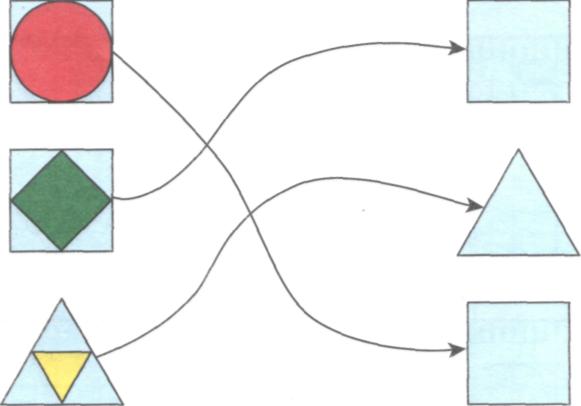
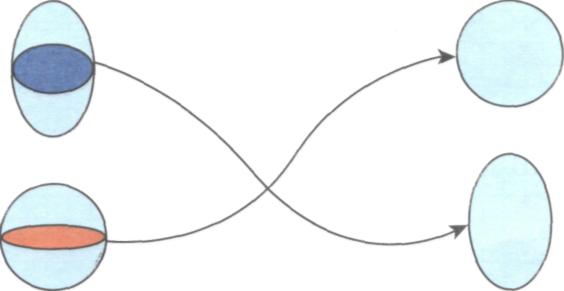
View and name the geometric shapes placed on the page to the left. First name the smaller figure, then the larger one. For example, a circle in a square, a circle in an oval, an oval in a circle.
You need to move each smaller figure to a new place - to the corresponding larger figures.
3
Purpose. Identification of children's ability to establish identity, similarity and difference in drawings. The development of visual analysis, observation.
Consider the rugs. What do they look like? What is the difference? Draw the same rugs in the frame on the right.
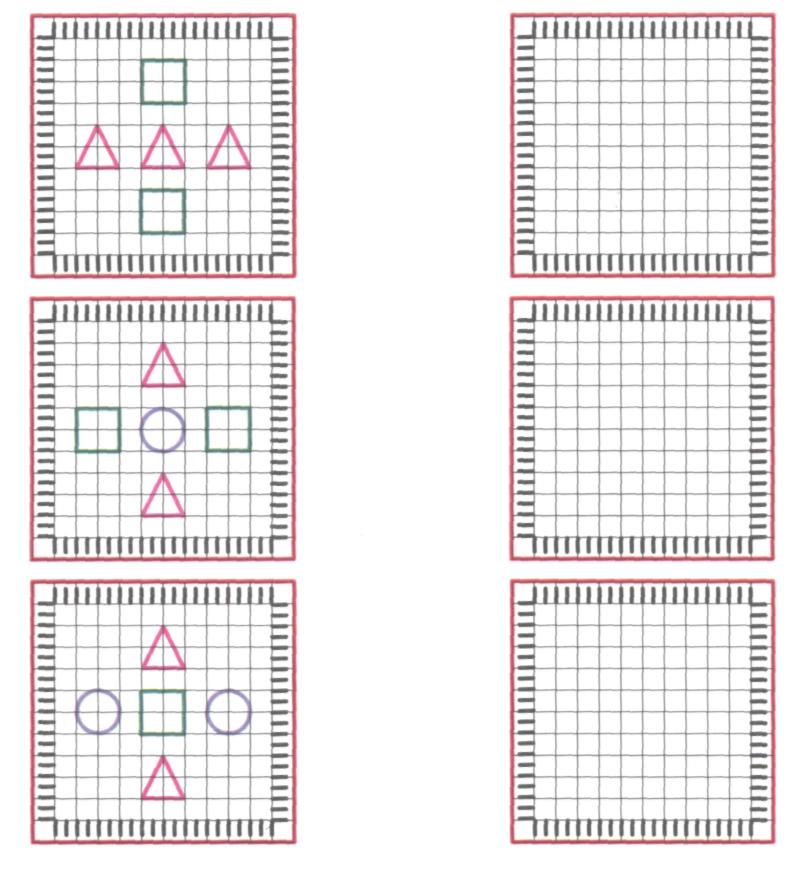
4.
Purpose.Identification of the level of formation of thought processes of analysis, synthesis, comparison. The development of visual-figurative representations, the ability to recreate the whole on the basis of visual correlation.
“Fix” the pillowcase on the pillow. Choose from different pieces of fabric the one that fits in size, color and pattern.
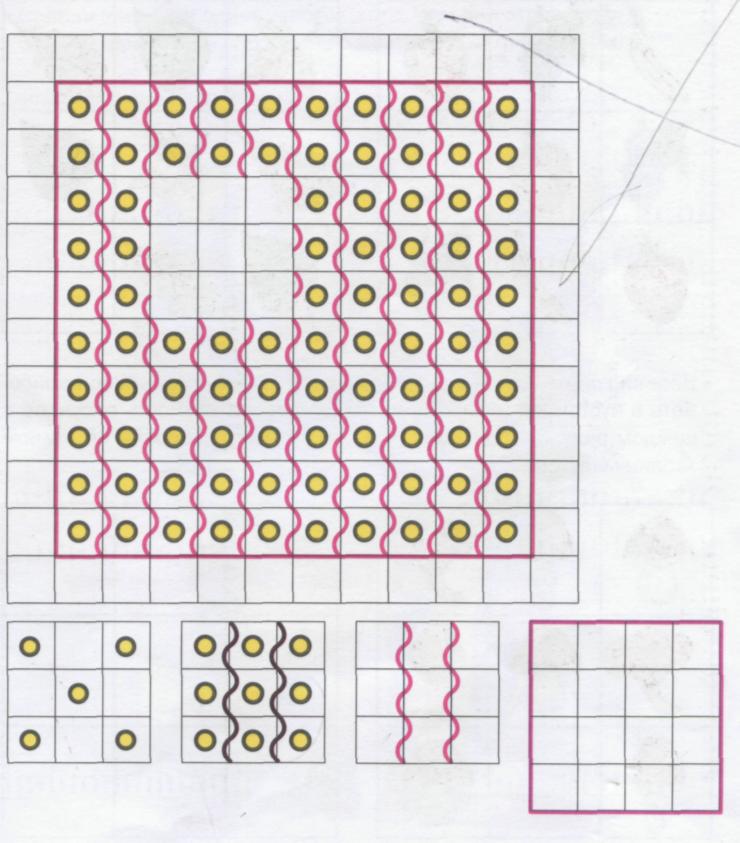
5
Purpose.Identification of the ability to establish patterns, the ability to keep instructions and control their actions during work. The development of attention and visual memory.
Find the pattern in the image of objects. What should be depicted in an empty box?
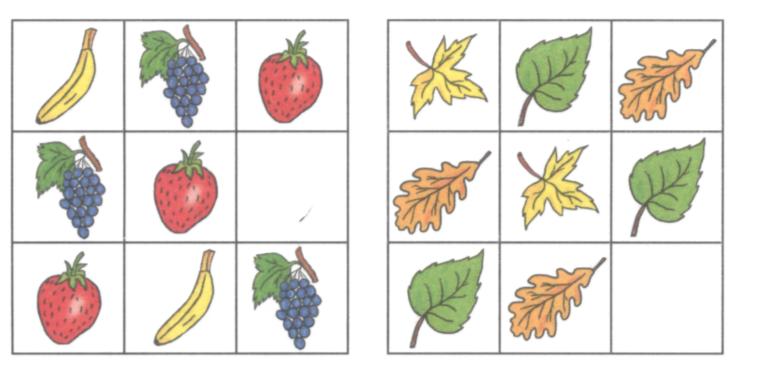
Name the mushrooms. Which one is poisonous? Which mushroom should I draw in an empty box? Remember the sequence of patterns in each row. Close the table with a sheet of paper. Fill in the memory table to the right.
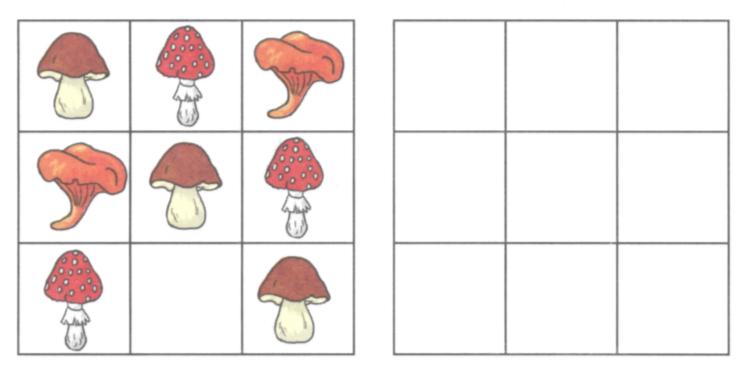
6
Purpose.Identification of the ability to visually perceive and differentiate colors, correctly name colors and shades, recognize and name geometric shapes, indicate their color and size; recount geometric shapes, indicate their number; write a story description.
Consider the clown. What shape is the patch on his suit?
Compare patches of the same color. What is the difference?
Compare the same patches in form. What is the difference?
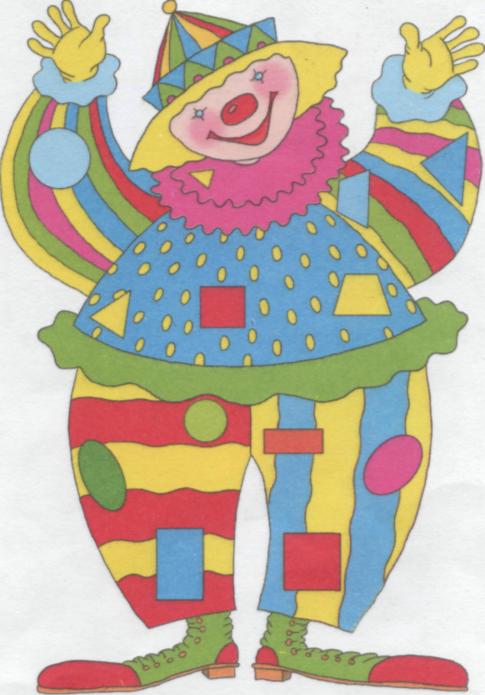

Purpose.Determining the focus of perception, the nature of emotional reactions. The formation of the ability to establish the identity of objects based on visual correlation. The development of attention, self-control, speech.
"Look at the drawing. Find in it the objects drawn in the cells, adjust the story according to the plot picture.
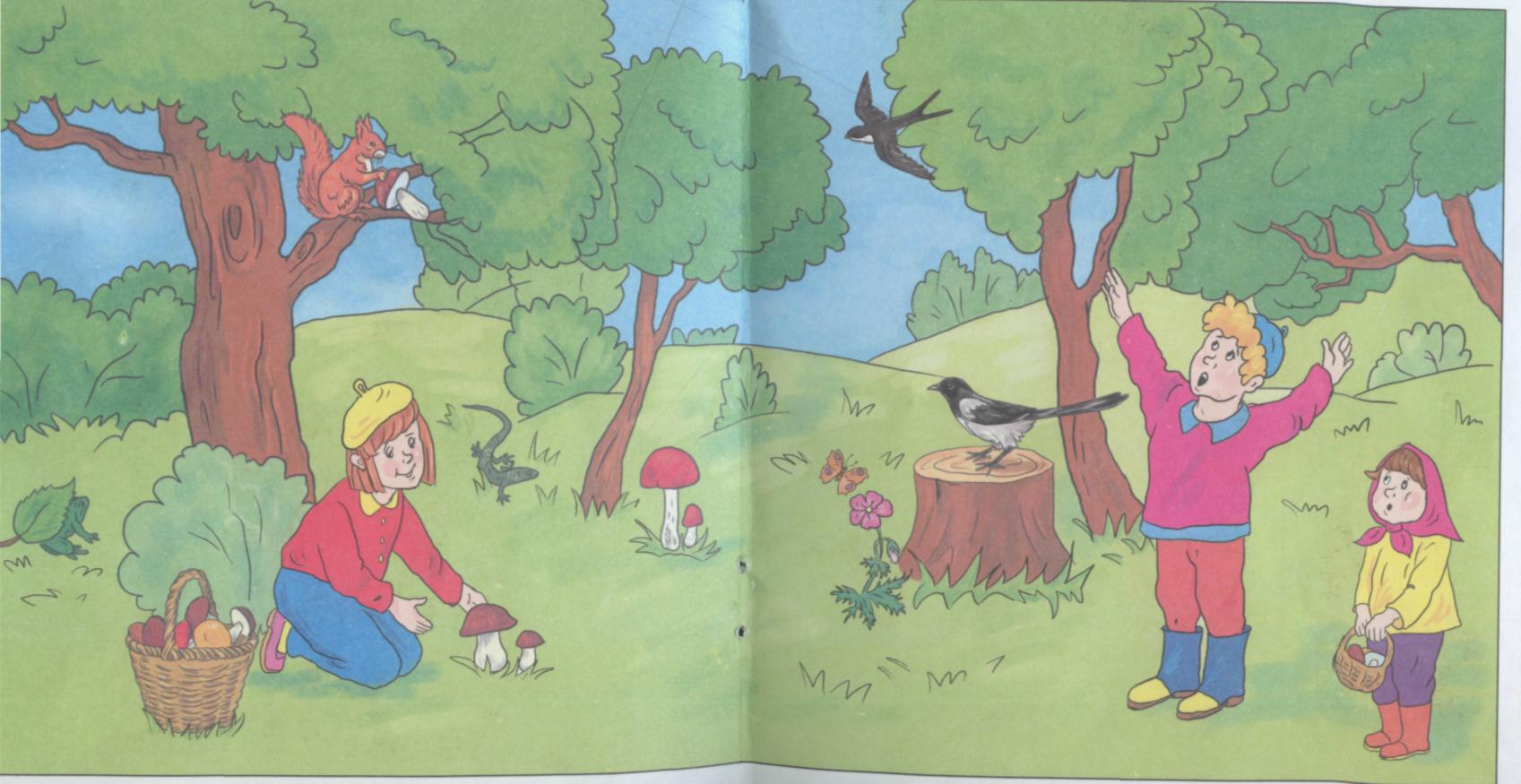
8
Purpose. Identification of the ability to search patterns in the location of well-known letters and numbers. Development of sustainability and concentration.


Define the pattern in the same way as you did in the first task with letters. Draw the desired number in the empty box.
9
Purpose.Identification of the formation of the processes of analysis, synthesis, comparison. Development of the ability to recreate the whole based on visual correlation.
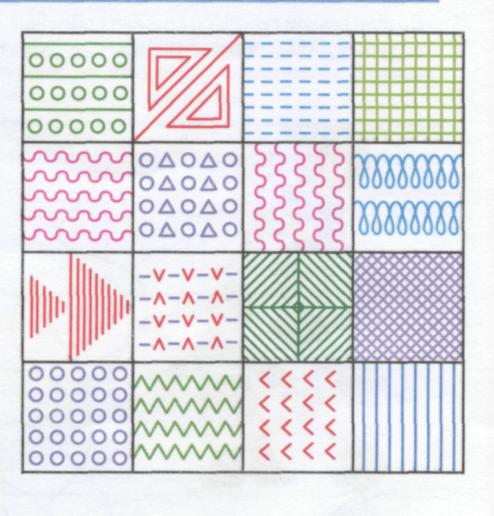
View a sample blanket for the doll. Ira collects the same blanket from shreds. What pieces of fabric do she need to sew on it?
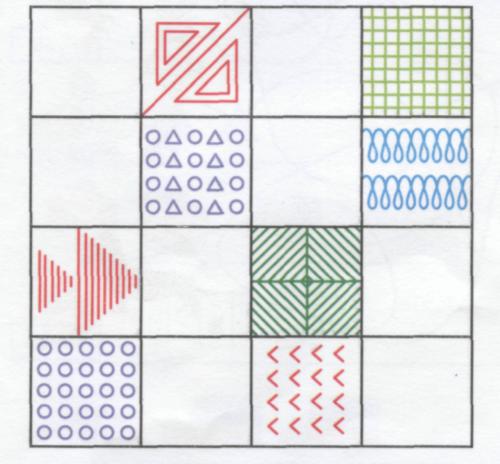
Choose the felt-tip pens of the desired color and fill the empty cells with drawings from the sample.
10
Purpose. Identification of the features of visual perception, stability, concentration, attention volume.
Friends went for a walk with their dogs, but the leashes got messy. Find out where whose dog is. Tell me the name of each boy’s dog.

//
Purpose.Identification of skills to establish patterns in the location of drawings, to keep instructions and control their actions in the course of work. Monitoring the activities of the child (her pace, as well as dexterity and coordination of hand movements).
It is unlikely that cards are laid out in front of the child, they draw his attention to the alternation of drawings, and offer to continue the series.
Find the pattern in the arrangement of figures and objects and continue the series.
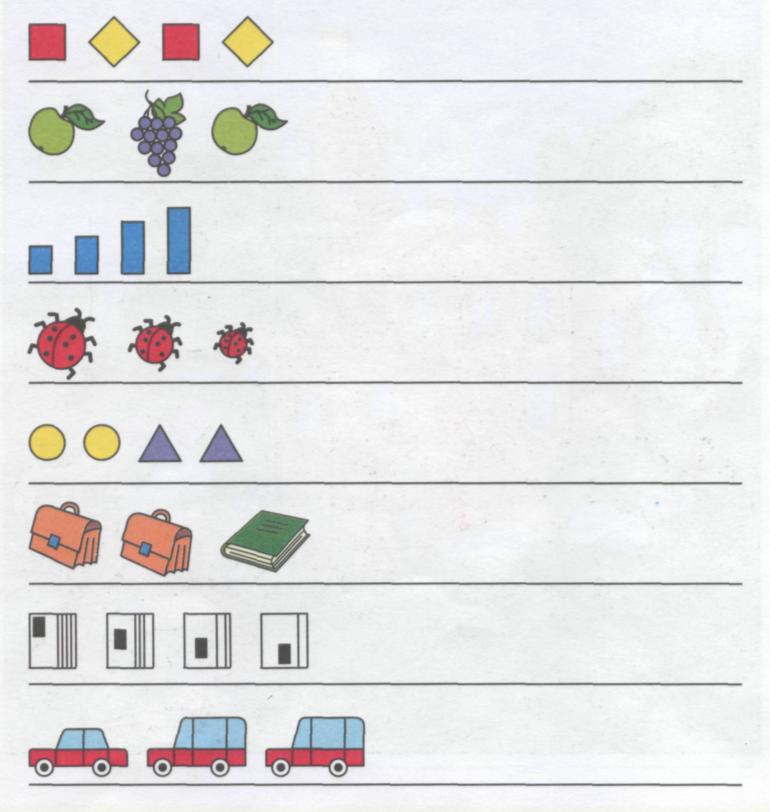
12.
Purpose. Identification of the formation of volumetric-spatial thinking, observation, features of speech development.
The castle doors are locked with three locks. Help Kot in boots pick up the keys to them. Remember the tale. Tell how the story ended for Cat and his master.
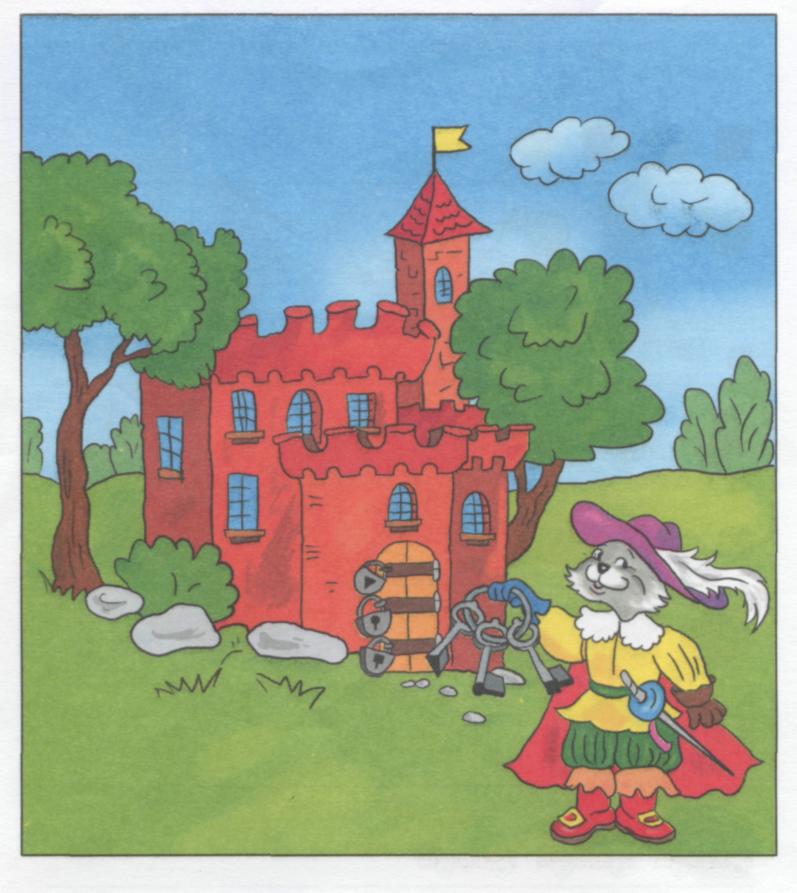
13
Purpose.The identification of the ability to establish patterns in the arrangement of figures, the determination of the ability to retain instruction, the characteristics of self-control. (The task is carried out at a certain pace, errors are noted.)
Find the pattern in the arrangement of the figures and continue the series.
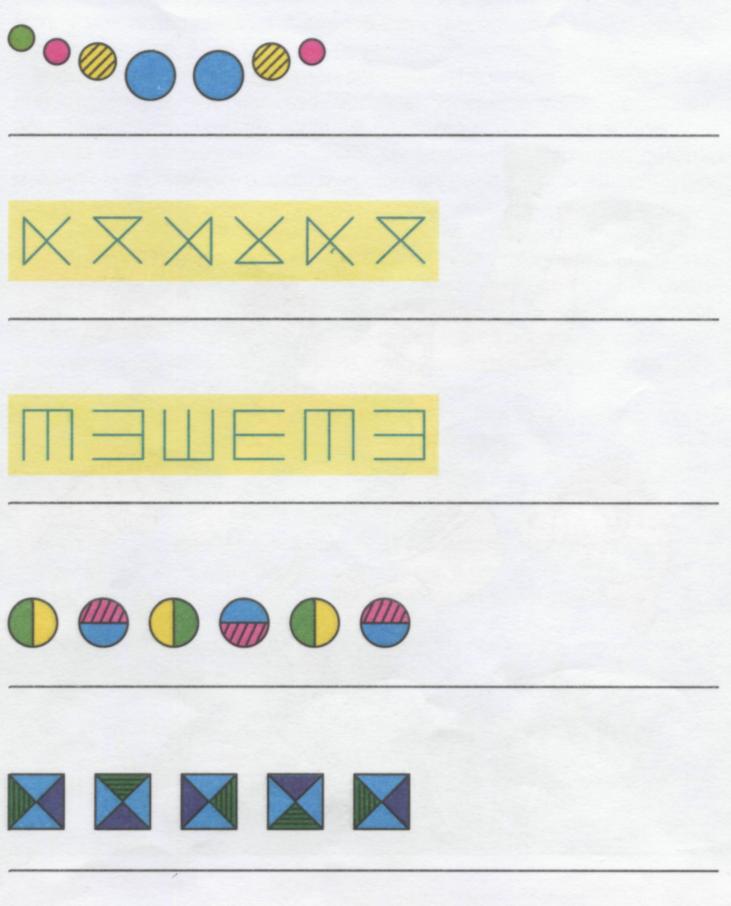
14.
Purpose. Determining the level of development of imaginative thinking, understanding the absurdity of the situation.
Look carefully at the picture. She is funny? Does it happen or not? Did the artist correctly draw everything?

15
Purpose. The formation of methods of correlative and spatial analysis (the method of extracting the elements of an object with the subsequent correlation of their spatial location), the ability to work in accordance with the model.
Draw a fox on the right, as shown in the sample, and color the heroes of the tale. What fairy tale are these characters from? Remember and tell the fragment of the tale, which is shown in the figure.

16.
Purpose.The formation of a combination of two or more features, the development of hand-eye skills.
Find the bottom of the page and draw a butterfly in a blank square that matches the color, shape and pattern.
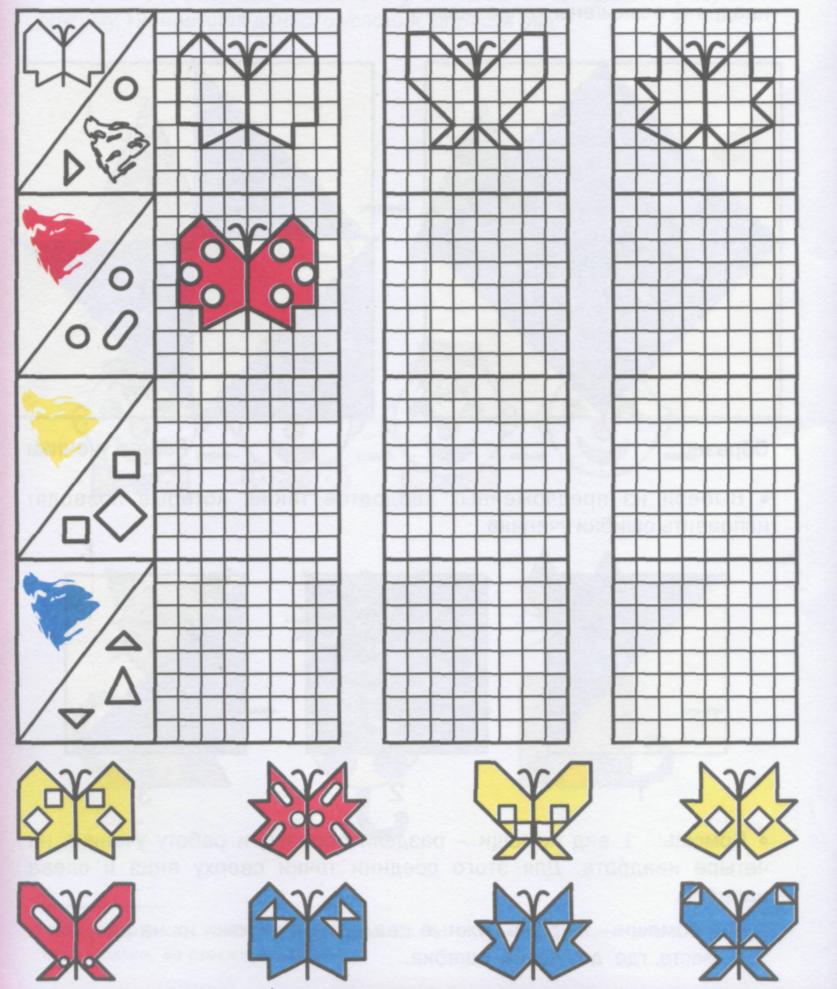
17
Purpose. The formation of methods of analyzing observation and spatial analysis, the development of the finer points of analysis.
The student, adding a geometric pattern of individual squares to the model, made mistakes. Consider the student's work. What squares are laid out incorrectly?
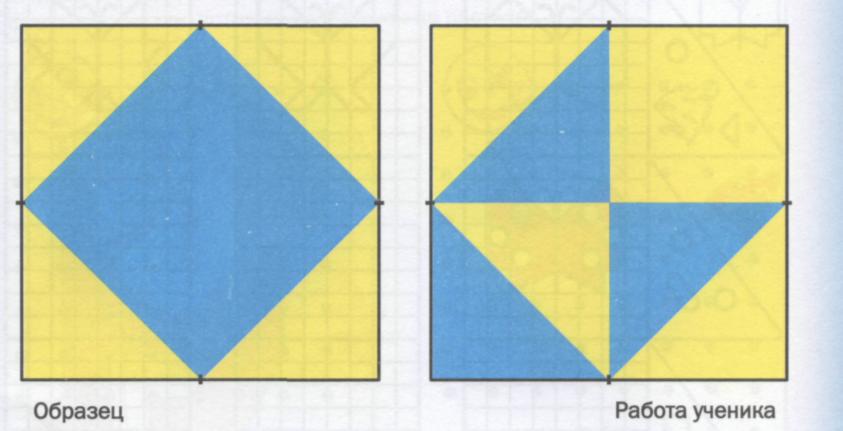
Choose from the proposed squares those that will correct the student’s mistakes.

Help: 1 type of help - divide the sample and the student's work into four squares. To do this, connect the dots from top to bottom and from left to right.
2 kind of help - cut out the necessary squares and put them on the drawing in the place where the mistake was made.
18
Purpose.The formation of techniques for distinguishing features of an object and determining changing features, the formation of the ability to arrange objects (objects) in a row according to some feature.
View the drawings. Name what changes from one drawing to another. Without breaking this condition, draw a row.
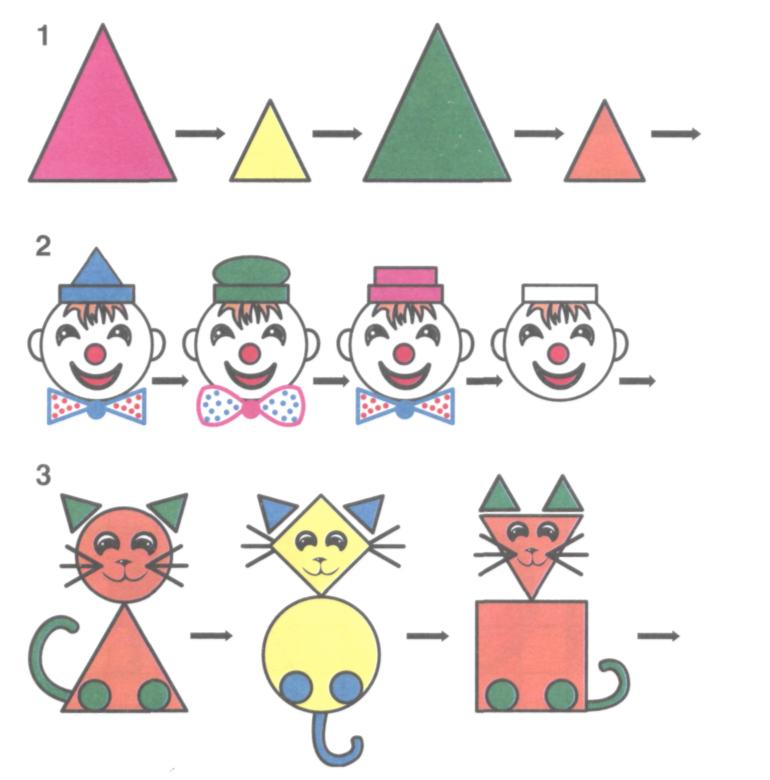
* Those signs that do not alternate, but change, children changearbitrarily, at its discretion.
19
Purpose.The formation of the method of correlative analysis, the ability to be guided in the work of the sample.
Find errors in student work. Circle them in red pencil.
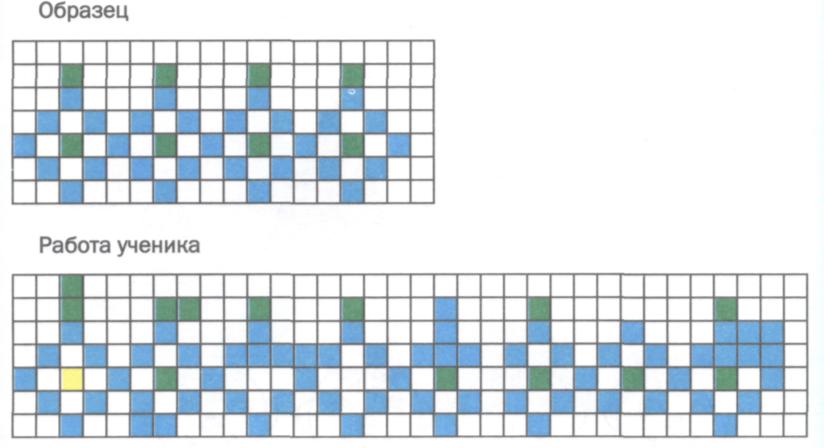
View the drawings. Draw the missing pieces in each drawing so that they become the same. What did you do? *

20
Purpose.The formation of the technique of highlighting semantic supports in the condition of the problem, the ability to work according to multi-link instructions.
Color the flowers in the vase with different pencils so that in the middle of the bouquet there is a yellow flower, and red is between yellow and blue.
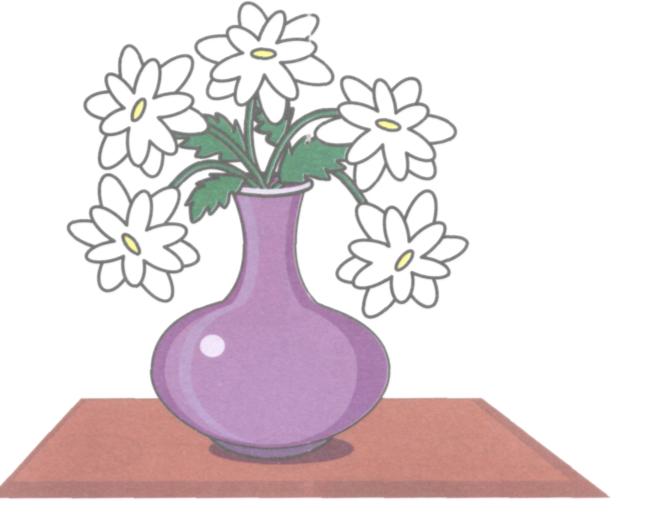

Draw the same shapes below so that the square is between the rhombus and the triangle, and the circle is to the right of the rhombus.
21
Purpose. The formation of techniques for the selection and combination of signs.
Look at the rows of figures. In each row, a sign changes from figure to figure. Name and write over the arrow a sign or signs that are changing.
Signs should be designated as follows: COLOR - C; FORM - F; SIZE - P; THICKNESS - T.
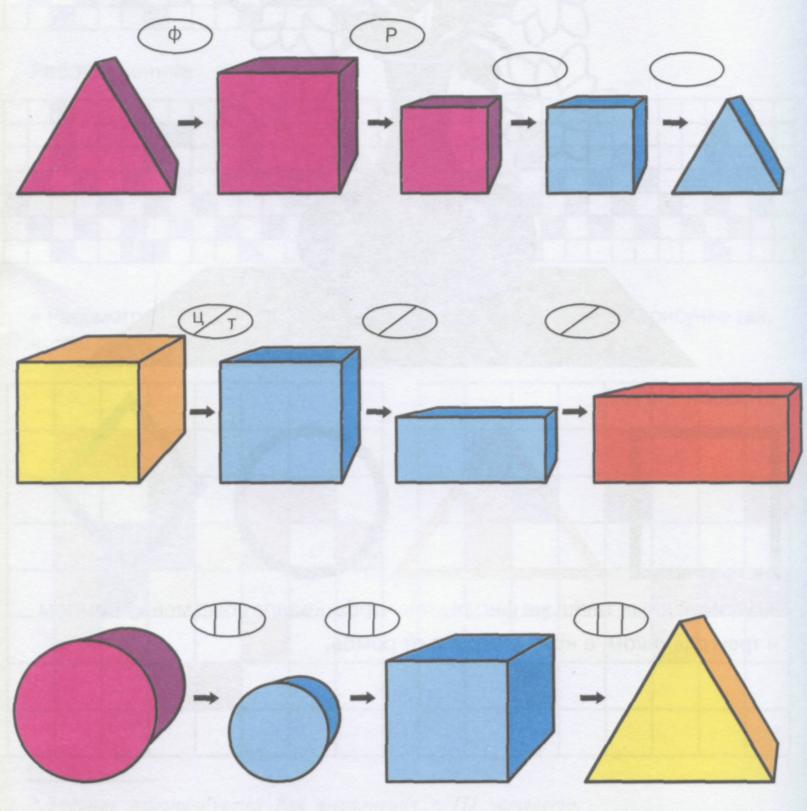
22
Purpose.The formation of the perception of the object as a whole, the ability to establish a causal relationship, to understand the emotional states of people.
Determine the emotional state of the people in each figure. Find the right word and finish the sentence.

Change each sentence according to the model:
"Due to the fact that Misha .... he ....".
Words for information: 1) glad, upset, angry, angry;
I was glad, upset, angry, angry;
joyful, angry, angry, upset.
23
Purpose. The formation of synthesizing techniquesobject (replenishment of missing links whole), the perception of the object as a whole.
Look carefully at the picture. Guess what the illustration is covered by a piece of paper. Explain your answer.
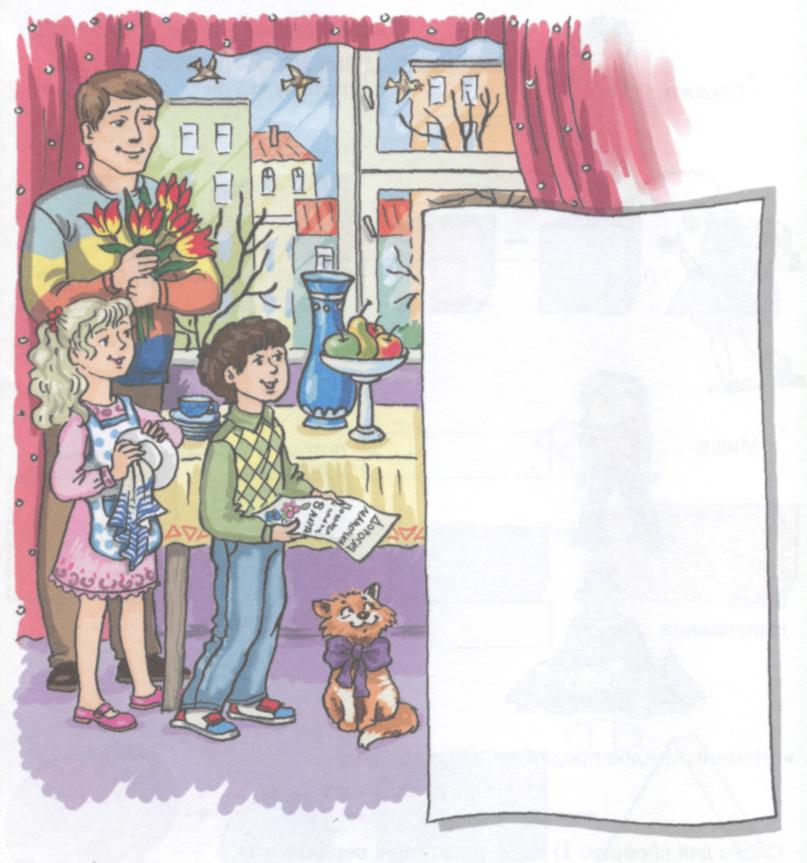
Make a story from the picture.
24
Purpose. The formation of a generalization technique based on the identification of the characteristics of the presented object (concrete or abstract), the distinction between essential and non-essential features, the combination of concepts by an essential feature.
Of the six pictures, choose two that can be combined into a group and give it one common name. Explain your answer.
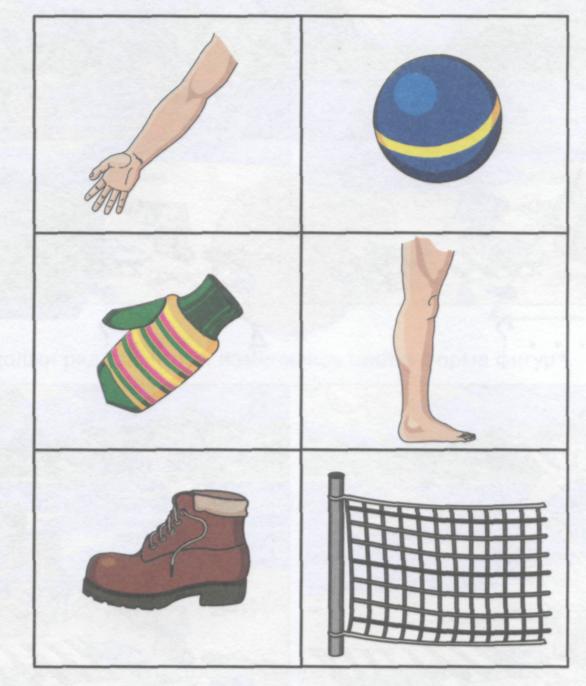
From six words, choose two of those that can be combined into one group according to an essential attribute.
frost snow ice autumn rain ice skates
root word subject ending adjective rule
bus stop wheel tram ticket driver
sweet sly bright red beautiful kind
25
Purpose. The formation of the synthesis technique, the perception of the object as a whole.
View pictures. They depict the beginning and end of the story that happened with the boys. Think of what happened to the boys on the river. Draw two missing pictures.
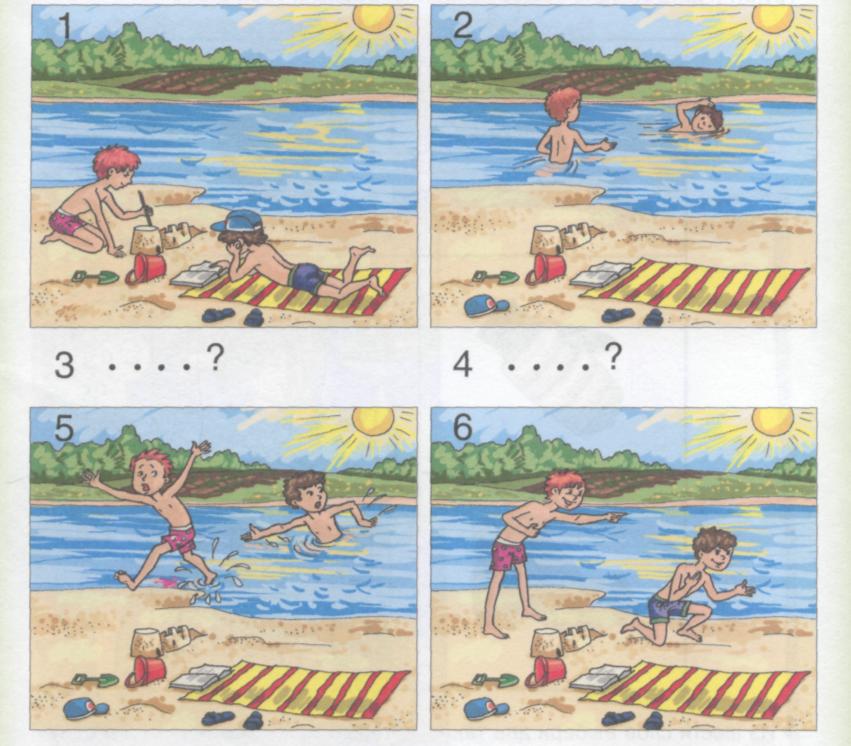
Read the beginning and end of the story. Add very briefly its contents so that the story turns out. Write the story in a notebook.
Sasha and Kolya agreed to go to the cinema on the weekend.
Therefore, Kolya stayed with Sasha and helped a friend.
26
Purpose.The formation of techniques for the selection and combination of signs, the formation of the ability to arrange objects in a row according to any attribute.
Look at the rows of three-dimensional figures. In each row, a sign changes from figure to figure. What is the sign that changes from figure to figure, and what remains unchanged in each row.
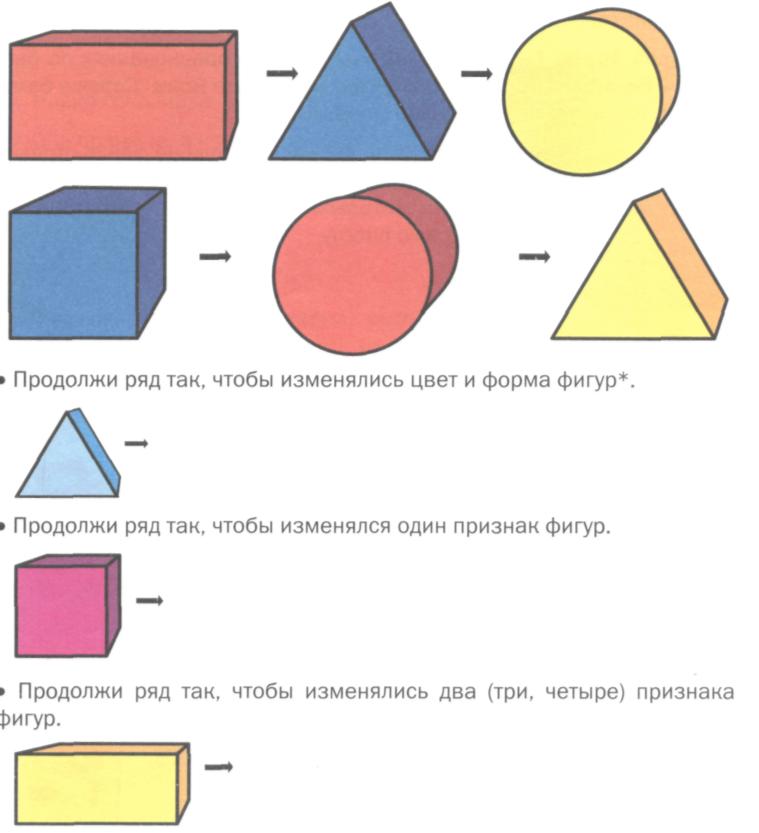
You can suggest using a child to display the thickness of a figureits schematic designation;*
Jks
*
- a thick figure;-\u003e thin figure
eg:
27
Purpose.Formation of the technique of highlighting semantic supports in the condition of the problem, the formation of the ability to establish causal relationships.
Read the task. Underline with red pencil only those
data in the condition that will be required to respond to
question of the task. Cross out with blue pencil extra data
from the condition.
Andrei, Igor, Seryozha and Vova participate in running competitions - Andrei runs after Igor. Igor runs slower than Vova. Seryozha runs fast. Which of the boys runs ahead of everyone?
Using the drawing, solve the problem. Draw segments on the file,
showing how each of the boys ran. Take out
file a sheet of paper that the correct ones were closed
answers, and check your work.

Purpose.The formation of the method of considering the object from different points of view, the ability to highlight the hidden meaning of expression, to understand the figurative meaning of proverbs.
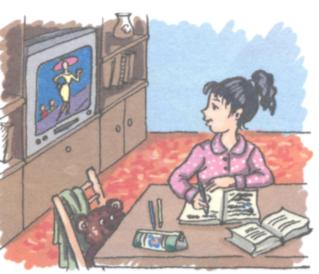
Read the proverbs. In each three proverbs, two are connected by a common meaning, and the third is not suitable for them. Find an extra proverb.
View the drawings. Connect the arrows with the drawing and the proverbs matching it.
The outfit is a falcon, and the crow's gait.
Eagle eyes, and mosquito wings.
And the sparrow does not live without people.
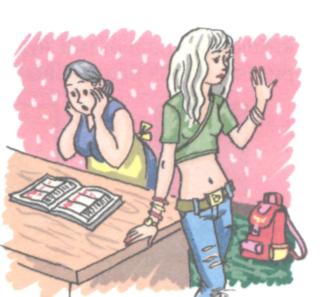
A bee stings with a sting, and a man with a word
One bee will not train a lot of honey.
One horse does not go around the entire field.
You’ll chase after two hares, you won’t catch one.
A cowardly hare and a stump - a wolf.
Drive two birds with one stone - do not catch a single one.

29
Purpose. The formation of methods of analyzing observation and spatial analysis (the method of extracting the elements of an object with the subsequent correlation of their spatial location), the development of the subtlety of analysis.
What details in the figure on the right are not as in the figure on the left?

What squares need to replace the details in the pattern on the right, so that the patterns become the same?

Help: divide the drawings into squares measuring 1.5 cm by 1.5 cm. Compare each element of the patterns individually and find the irrelevant parts.
30
Purpose.The formation of the ability to correctly use (use) prepositions denoting spatial relationships.
Show the kitten inside the cabinet, the dog behind the box and in front of the box, the lampshade above the table, the kitten under the chair, behind the cabinet, in the closet, on the chair, in the drawer of the table.
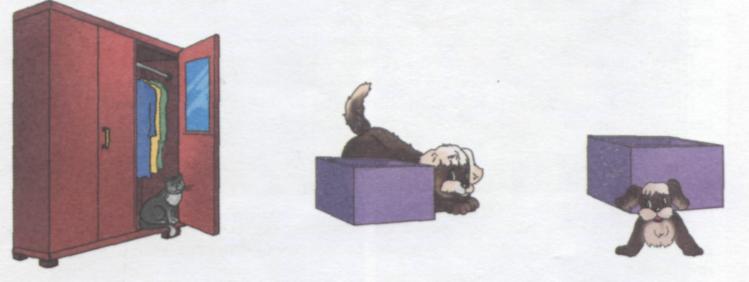
ANSWER THE QUESTIONS:
Where did the kitten hide? (In the closet, behind the closet, under the chair.)
Where is the kitten sitting? (On a chair, in a drawer.)
Where is the dog located? (Behind the box, in front of the box.)
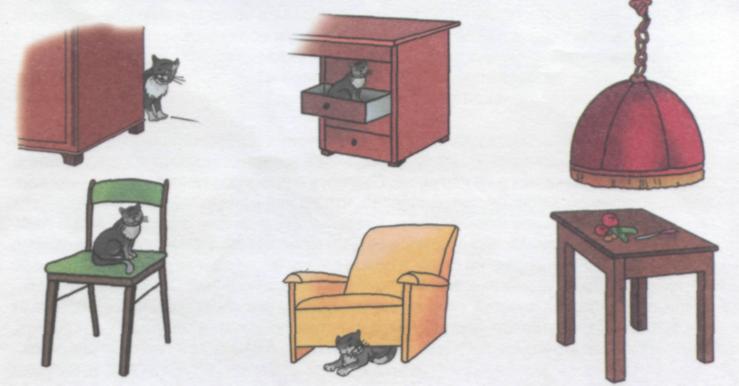
31
Purpose.Formation of the prepositions as independent separate words using the skills scheme.
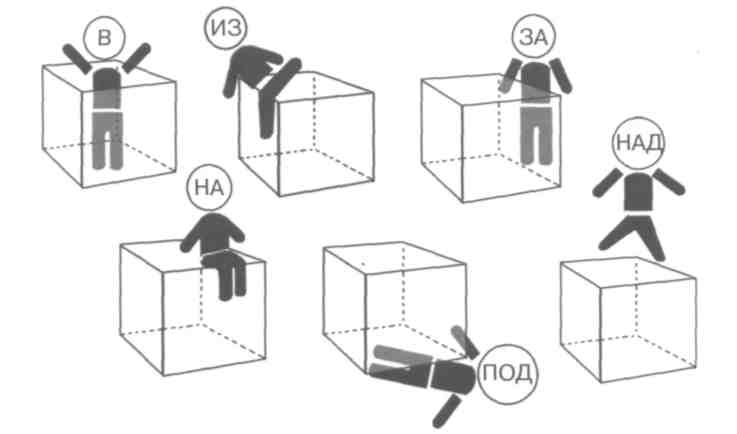
I will read the prepositions, and you show where the preposition man is (in box, under a box, on box, per a box, crawls out of the box).
Remember the words-prepositions “on”, “for”, “under”, etc. Make a sentence with any preposition.
![]()
Purpose. The development of reader interest in children of six-seven years of age in the process of global reading of words, the formation of interest in letters, the development of memory, attention, preparation for analytical and synthetic reading. Consolidation of the use of prepositions.
Help the hares hide from the fox. Draw a line from each bunny to the place where he wants to hide, according to the note left by him.
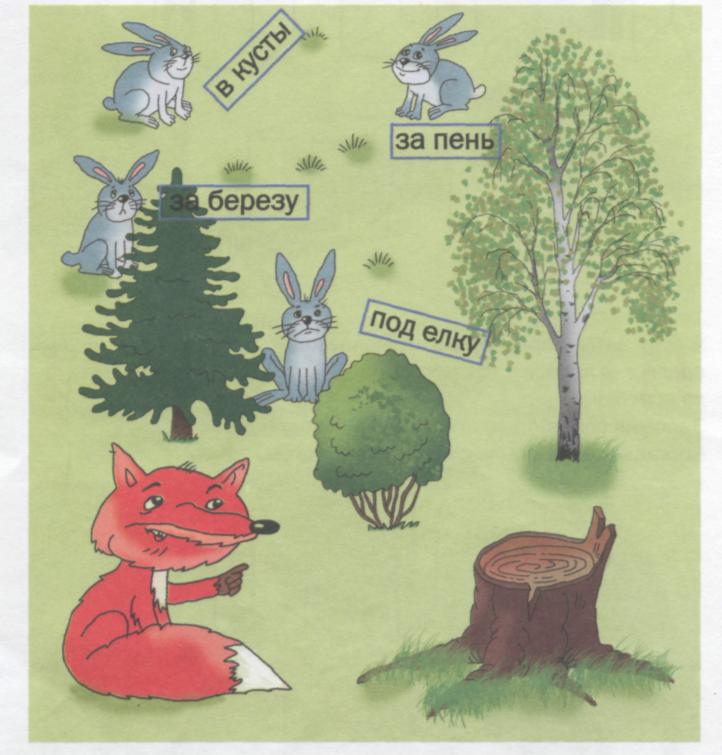
Preliminaryjob.
An adult reads the words on separate cards, after making them photocopies from this picture. After reading the card out loud, the adult places it on the drawing, inviting the child to remember what is written on it. So every card is worked out.
33 Purpose. Prevention of biography and dyslexia. Select the correct image of the printed letter among pairs or rows of letters printed in the mirror. Lexicon activation.
Show the correctly typed letters by closing the mirror image with your finger in each pair or row. Think of 2-3 words with each of these letters at the beginning of the word.
![]()
34
Purpose.Teaching children the global reading of syllables and words. The development of memory, attention, interest in letters and syllables.
Read what is written on the cards (with the help of a teacher). View pictures. Connect the lines of the cards so that the words come out. Read the words.

35
Purpose. Teaching children the global reading of syllables and words.
Read what is written on the cards under the pictures. Compose words by uniting syllables on cards with lines.
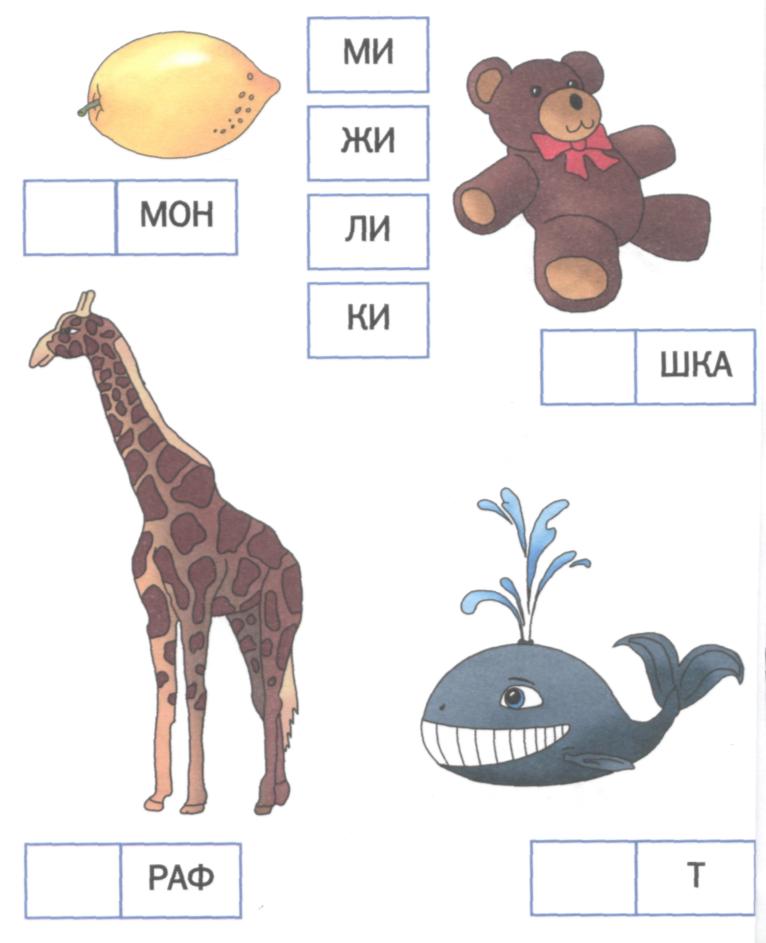
36
Purpose.Prevention of dysgraphia and dyslexia. The development of logical thinking, visual and auditory attention, spatial perception. Work with isographs. Reading words written in different fonts. Recognition of objects depicted in letters.
In every drawing a word was hidden. Consider carefully the first drawing. Guess what word is hidden in it. Read it by circling the letter. Such picture words are called isographs. Solve the remaining isographs by helping yourself with a pointer. Name the objects depicted by letters.
![]()
37
Guess the isographs. Read the words by surrounding the letters with a pointer. Name the objects depicted by letters.
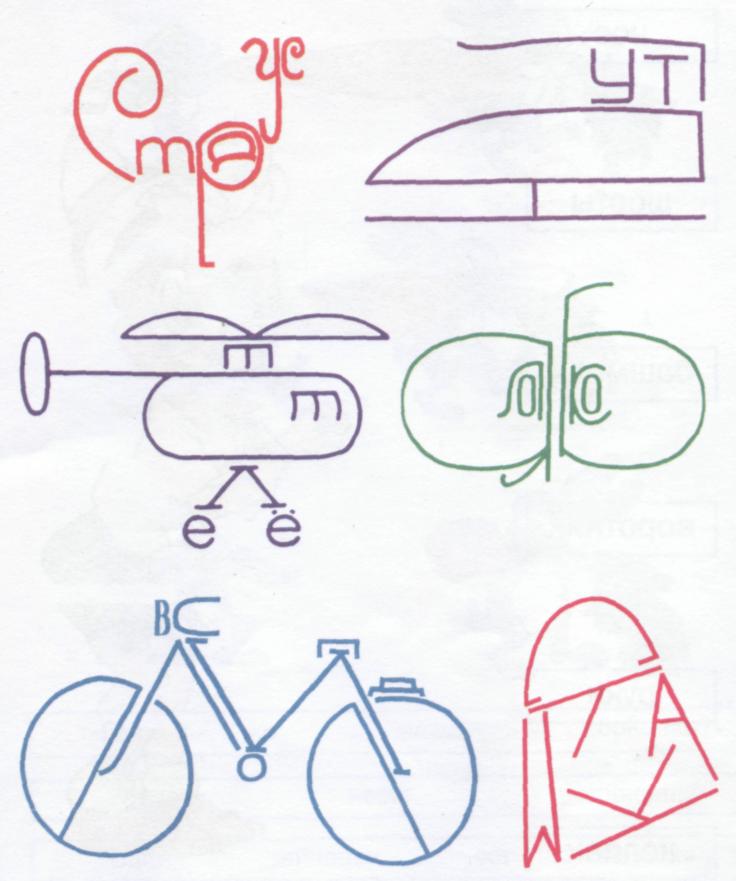
38
Purpose.Composing a whole of seven asymmetric parts. Remembering words read by adults. Global reading of words available to the child. Correlation of words and pictures.
Consider the drawing. Read the words on the cards. Connect each part of the picture with a suitable card. Put the whole picture out of parts.

Purpose.Determination in the text of the order of the sentences located in the broken sequence.
View the pictures in order. Read the highlighted words. Pick up the appropriate offer for each picture.

40
Purpose. Learning to write a story in a series of sequential pictures.
View pictures. On them you can make a story. Pictures are mixed up. Think and define a sequence of events. In the small squares, put the desired numbers. Read the offer cards and think about which pictures they refer to. For what picture is the card missing? Make an offer on this picture.
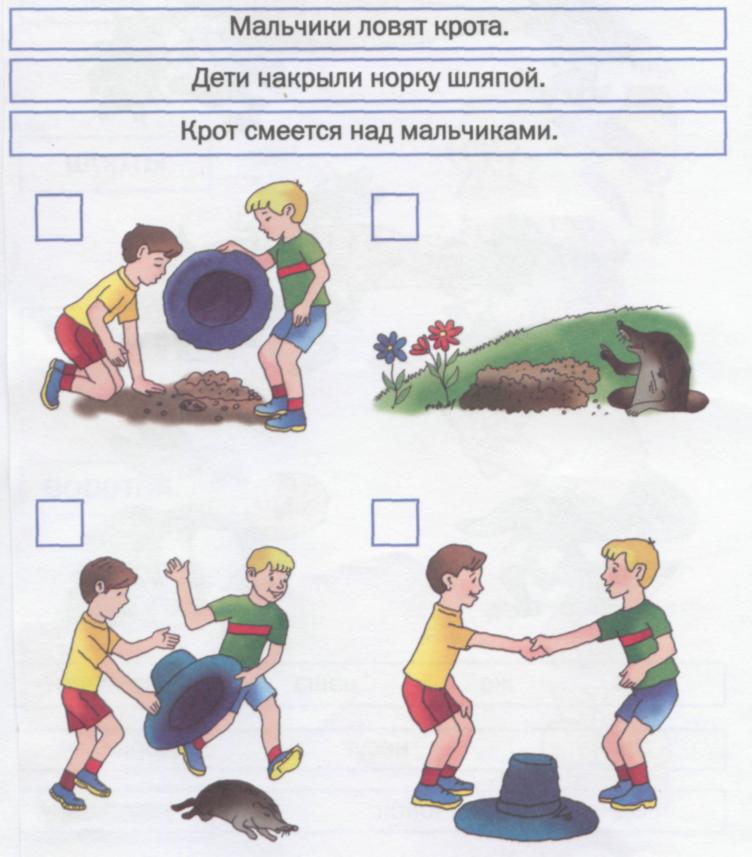
Purpose. Exercises in highlighting and clearly pronouncing the first sound of words of different syllabic structure. Expanding the stock of species concepts on the topic “Birds and Insects”, differentiating these generic concepts. Exercises to exclude the 4th excess object, self-grouping of images according to the categorical principle (birds - insects).
View the pictures in the top row. Three of them can
Combine in one group and call a generalizing (general) word, and
The fourth is superfluous. What is the generalizing word? Which subject
Excess? Why?
Name each picture. Try to pronounce the word so that
The first sound in it was clearly audible. What do these words look like? Write
In a small square, the letter C.
View the pictures in the second row. Distribute all the pictures into two
Groups: insects and birds.

42
Purpose.Sentence building training. Consolidation of knowledge of the names of labor duties corresponding to various construction majors.
Read each card and combine it with the corresponding picture. Tell us about the work of the plasterer, tiler, installer, glazier, painter, whom you see in the drawings. What are the common words for all these professions?
Make a proposal by combining cards with the names of construction specialties and cards with a description of labor activities. Who should do what work?
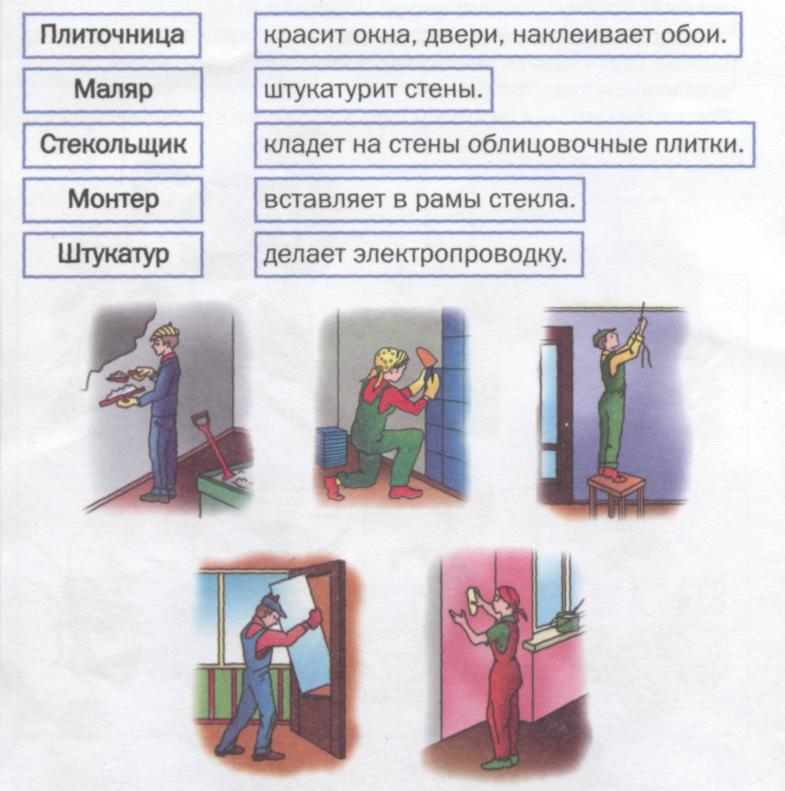
43
Purpose.Training in the construction of statements about the appointment of individual subjects (from 2-3 sentences). Formation of a generalizing concept of “medical supplies”, introduction to the active dictionary of exact names of objects.
View the drawings. Tell me which medical supplies the doctor needs and which the nurse needs.
ADDITIONAL STORIES.
The doctor listened to the patient’s heart and lungs. He measured the pressure with a tonometer. Then he measured the patient's body temperature. (What happened next?)
The nurse took cotton wool, a pipette and eye drops. (What happened next?)
The doctor looked at the patient's throat, found out what his temperature was, and ordered the nurse to urgently bring a syringe. (What happened next?)

Purpose. The study of impressive speech (understanding the meanings of words denoting objects and actions). Exercises in recognizing the position of sound in a word.
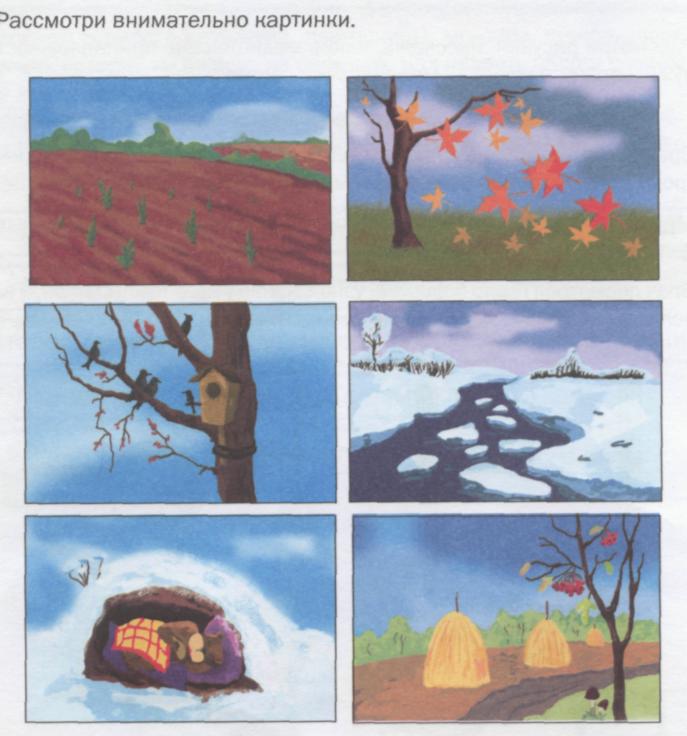
Find pictures for the following words (items and actions).
Ice drift, den, leaf fall, autumn, starlings, winter, wind, winter, field, haystacks, seedlings, ice floes, mushrooms, birdhouse, spring, rowan bunches, new settlers.
Blowing, emerge, flew in, sleeps, swim, tears, hang, melt, turn green,
They chirp, swirl, hibernate, and crumble.
Name the words with the sound [l] ([l "]). Determine its place in the word.
A circle of questions: definition of a scheme of own body; right and left directions in space; spatial relationships of objects; body circuits standing opposite; sequence of a subject series; sequence of a number series; graphic designation of directions.
1. Listen to a poem by V. Berestov:
A student stood at a fork in the road.
Where is the right, where is the left he could not understand.
But suddenly the student scratched his head
by the very hand with which he wrote
and threw the ball, and flipping pages,
and kept a spoon, and swept the floors.
“Victory!” - there was a jubilant cry:
where is right, where is left - the student recognized.
2. Verification and clarification of children's ideas about body pattern.
- Raise your “main” hand, name it (right).
- Raise the other hand, name it (left).
For some children (left-handed), the answers will be the opposite. It is benevolent to consider such cases and note that the names of the hands remain generally accepted, which should be remembered.
3. Fix the distinction and naming of hands with the help of a diagram (Fig. 1)
- come up, put a brush, define a hand:
4. Correlate parts of the body with the right hand, name them (right cheek, leg).
Correlate parts of the body with your left hand, name them (left knee ...).
5. According to the speech therapist’s instructions, for example, show the right eyebrow, left elbow. Children should be practiced until their confident orientation in the scheme of their own bodies.
6. Determination of directions in space:
- stretch out the right hand. List items on this side, i.e. on right;
- similarly - on the left;
- turn your head left, right;
- tilt your head to the right shoulder; to the left shoulder, i.e. right left.
7. Clarification of spatial relationships:
- standing in a column, name standing in front, standing behind;
- standing in a row, call standing on the left, standing on the right;
8. On the demonstration canvas with slots for pictures, according to the instructions, place the corresponding pictures to the left and right of the tree (see Fig. 2)
Fig. 2
9. Sitting at the table, identify its right and left edges. Raise your hand to those students who are sitting at the right half of the table.
Similarly sitting on the left (see. Fig. 3, 4).
10. Determine the neighbor’s place in relation to himself, correlating this with his corresponding hand (“Petya to my right”).
Determine your place in relation to the neighbor, focusing on the appropriate hand of the neighbor ("I am sitting to the left of Petit"), (see Fig. 5)
11. Acquaintance with the body diagram of the person standing opposite, a) The called student, standing with his back to the class, raises his right hand. The rest, sitting in their places, raise their right hand and are convinced that the called student has correctly followed the instructions.
b) Without lowering his raised hand, the student turns to face his comrades. Children, comparing the position of his raised hand with his own, draw a conclusion about the opposite arrangement of the right and left parts of the body in persons facing each other. (Everyone who wants to be convinced of this is doing this task one by one.) (See Fig. 6)
12. Standing in pairs facing each other, at the command of a speech therapist, one of
each pair is determined first at home, and then at the comrade's right hand, left shoulder, etc. The second student, if necessary, must correct the error (see Fig. 7). Then the roles change.
13. In the same starting position, one of the two silently shows himself on individual parts of the body, and the other comments, for example: "This is your right knee."
14. Determine which hand the girl is waving at us from the window of the car (see Fig. 8).
Determination of the linear sequence of the subject series.
15. The game "Walk in the Park"
Purpose. Exercise students in reproducing a consistent series of subjects.
Game Terms Children sit at their desks. A speech therapist gives them 4-6 colored bars (from the Stroitel children's set). To the left of the children is the entrance to the park (see Fig. 9).
Approximate speech accompaniment of the game situation:
Speech therapist. We walk along the path. The first bench on our way is green (children put a green bench). The next bench is yellow, followed by blue. At the end of the track is red.
In this way, the children line up from left to right. They are in unison and one by one list the benches in this direction.
Speech therapist. We reached the end of the track. Turn back and call all the benches in the opposite direction, i.e. from right to left.
16. The game "Where to find me?"
Purpose. Exercise students in finding one subject in a series of homogeneous.
The game conditions are the same as in the previous one. Previously, children exercise in showing the first bench on the left (at this stage it is more convenient to do this with the left hand); the first bench to the right (with the right hand); third bench on the left (left hand), etc.
One of the students - the leader - says: "I will be on the second bench on the right." The rest put their hand on this bench. The host determines whether everyone “found” him. Children take turns playing the game, checking the correctness of the actions of their comrades.
17. Identify the right and left sleeves of the blouse lying
a) back up (see Fig. 10);
b) back down (see Fig. 10).
18. Determine the left and right pockets of jeans (option A - fig. 11) (option B fig. 12).
19. Determine whether the trace of the right or left foot was imprinted in the sand (Fig. 13).
20. How to determine the right and left bank of the river?
21. Determine in fig. 14 “Family for a walk”, on which side relative to the others is each family member (right, left?). Compare with fig. 2 to task 8. How to explain the mismatch of orientation in these two figures?
22. Visual dictation (based on the material of geometric shapes, various stencils, etc.) is carried out as follows:
a) consider the sample (a series of figures or images of objects);
b) list them several times, remembering the sequence;
c) the sample is closed;
d) lay out from memory this series of individual handouts;
d) repeated demonstration of the sample;
e) verification of correct implementation - in various control options.
The length of the row is gradually growing - as the children train (example - see Fig. 15).
23. The sequence of the digital series on the example of the numbers of the first ten: 123456789
a) What is the first number on the left; first number on the right. Which one is bigger? In what direction do the numbers in the row increase? (From left to right)
b) Read the series in reverse order (i.e., from right to left). How does the value of numbers change in this direction? (Decreasing).
24. Show number 4. Does he have neighbors in a row? (3 and 5). What number is left of 4? Is it bigger or smaller than 4?
Name the neighbor of the number 4 on the right, compare in magnitude (to the right the numbers increase).
Other numbers are treated similarly.
25. “Show the neighbor on the left” The facilitator calls with pauses the numbers: 7, 3, 9, 5 ... Students show, respectively, 6, 2, 8, 4 ..., after which the conclusion about the value of the number to the left of the row is repeated numbers.
26. "Show the neighbor on the right" - is carried out similarly. Depending on the school experience of children, such tasks within 20 and 100 can be performed in writing.
27. "Return the number to place." On a typesetting canvas a number series is shown in which any number is missing, for example: 1 2 3 4 5 6 8 9.
Sample answer: “The number 7 is missing. It is more than 6 per unit, which means it should be to the right of it.” Or: “The number 7 per unit is less than 8, it must be put to the left of 8”.
28. Graphic playback of directions. Preliminarily show with your hand in the air the directions: from top to bottom; down up; from right to left; from left to right.
29. Position the card with the arrow, orienting it in the same directions as in the previous task. "Read" directions.
30. Work in notebooks (starting points for subsequent tasks in notebooks of students are pre-marked by a speech therapist).
Mark four dots on a line. Put a "+" sign:
from the first point below
from the second - from above
from the third - to the left
from the fourth - to the right
31. Mark four points on the line. From each point, draw an arrow in the direction of:
1 - down
2 - to the right
3 - up
4 - to the left
32. On two lines mark 8 points,
a) Mentally group the points into squares, tracing each of them with a finger (four squares).
b) In the first square, select with a pencil the first upper point, then the first lower point, and then connect them with the arrow in the direction from top to bottom. Similarly, select the second lower point and connect it with the arrow to the second upper point in the direction from the bottom up.
c) In the second square, select the first upper point, then the second upper point and connect them with the arrow in the direction from left to right. Similarly, connect the lower points with the arrow in the direction from right to left.
d) In the third square, select the first upper point and the second lower one, connect them with an arrow pointing simultaneously from left to right - from top to bottom.
e) In the fourth square, select the first lower point and the second upper one. Connect them with an arrow directed simultaneously from left to right and from bottom to top.
33. “Read” the directions of the arrows in all completed tasks.


